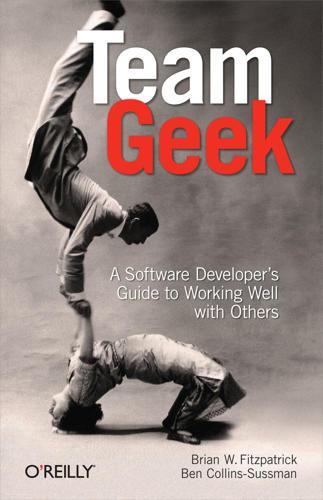
Team Geek
by
Brian W. Fitzpatrick
and
Ben Collins-Sussman
Published 6 Jul 2012
honesty, leaders and, Track Happiness, Other Tips and Tricks Hope is not a strategy motto, Antipattern: Ignore Low Performers Hopper, Grace Murray, Manipulating Your Organization, Manipulating Your Organization HRT principles, Lose the Ego–Learn to Both Deal Out and Handle Criticism, Learn to Both Deal Out and Handle Criticism–Fail Fast; Learn; Iterate, Learn to Both Deal Out and Handle Criticism, Fail Fast; Learn; Iterate–Fail Fast; Learn; Iterate, Fail Fast; Learn; Iterate, Fail Fast; Learn; Iterate, Fail Fast; Learn; Iterate, Leave Time for Learning–Be Open to Influence, Leave Time for Learning, Be Open to Influence–Be Open to Influence, Be Open to Influence, Be Open to Influence, The Servant Leader, Be Honest–Be Honest, Be Honest, Be Honest, Identifying the Threat bad behavior and, Identifying the Threat handling criticism, Learn to Both Deal Out and Handle Criticism–Fail Fast; Learn; Iterate, Fail Fast; Learn; Iterate honesty in feedback, Be Honest–Be Honest, Be Honest, Be Honest importance of continuing learning, Leave Time for Learning learning from failure, Fail Fast; Learn; Iterate–Fail Fast; Learn; Iterate, Fail Fast; Learn; Iterate, Fail Fast; Learn; Iterate learning patience, Leave Time for Learning–Be Open to Influence, Be Open to Influence lose the ego, Lose the Ego–Learn to Both Deal Out and Handle Criticism, Learn to Both Deal Out and Handle Criticism openness to influence, Be Open to Influence–Be Open to Influence, Be Open to Influence servant leadership and, The Servant Leader humility (HRT principle), Lose the Ego–Learn to Both Deal Out and Handle Criticism, Learn to Both Deal Out and Handle Criticism–Fail Fast; Learn; Iterate, Learn to Both Deal Out and Handle Criticism, Fail Fast; Learn; Iterate handling criticism and, Learn to Both Deal Out and Handle Criticism–Fail Fast; Learn; Iterate, Fail Fast; Learn; Iterate losing the ego and, Lose the Ego–Learn to Both Deal Out and Handle Criticism, Learn to Both Deal Out and Handle Criticism I industrial revolution, @Deprecated Manager influence, openness to, Be Open to Influence–Be Open to Influence, Be Open to Influence information hoarding, Your Life Under a Bad Manager insecurity, The Genius Myth–Hiding Is Considered Harmful, The Genius Myth, Hiding Is Considered Harmful, Antipatterns genius myth and, The Genius Myth–Hiding Is Considered Harmful, The Genius Myth, Hiding Is Considered Harmful leaders and, Antipatterns instant messages, Working in a “Geographically Challenged” Team, Online Chat institutional knowledge, Seek Powerful Friends Internet Relay Chat (IRC), Online Chat–Online Chat, Online Chat intrinsic motivation, Intrinsic Versus Extrinsic Motivation–Final Thoughts, Final Thoughts introverts, environment and, Culture and People IRC (Internet Relay Chat), Online Chat J Jackson, Phil, The Genius Myth Jobs, Steve, The Genius Myth, Antipattern: Compromise the Hiring Bar, How to Ask a Busy Executive for Anything … via Email Jordan, Michael, The Genius Myth, The Genius Myth K Kerth, Norman, Look for Facts in the Bile knowledge is power, Your Life Under a Bad Manager L latency (application speed), Speed Matters–Speed Matters, Speed Matters, Speed Matters laziness trap for programmers, Don’t Be Lazy–Hide Complexity, Hide Complexity leaders and leadership, The Genius Myth, What Is Culture?
…
honesty, leaders and, Track Happiness, Other Tips and Tricks Hope is not a strategy motto, Antipattern: Ignore Low Performers Hopper, Grace Murray, Manipulating Your Organization, Manipulating Your Organization HRT principles, Lose the Ego–Learn to Both Deal Out and Handle Criticism, Learn to Both Deal Out and Handle Criticism–Fail Fast; Learn; Iterate, Learn to Both Deal Out and Handle Criticism, Fail Fast; Learn; Iterate–Fail Fast; Learn; Iterate, Fail Fast; Learn; Iterate, Fail Fast; Learn; Iterate, Fail Fast; Learn; Iterate, Leave Time for Learning–Be Open to Influence, Leave Time for Learning, Be Open to Influence–Be Open to Influence, Be Open to Influence, Be Open to Influence, The Servant Leader, Be Honest–Be Honest, Be Honest, Be Honest, Identifying the Threat bad behavior and, Identifying the Threat handling criticism, Learn to Both Deal Out and Handle Criticism–Fail Fast; Learn; Iterate, Fail Fast; Learn; Iterate honesty in feedback, Be Honest–Be Honest, Be Honest, Be Honest importance of continuing learning, Leave Time for Learning learning from failure, Fail Fast; Learn; Iterate–Fail Fast; Learn; Iterate, Fail Fast; Learn; Iterate, Fail Fast; Learn; Iterate learning patience, Leave Time for Learning–Be Open to Influence, Be Open to Influence lose the ego, Lose the Ego–Learn to Both Deal Out and Handle Criticism, Learn to Both Deal Out and Handle Criticism openness to influence, Be Open to Influence–Be Open to Influence, Be Open to Influence servant leadership and, The Servant Leader humility (HRT principle), Lose the Ego–Learn to Both Deal Out and Handle Criticism, Learn to Both Deal Out and Handle Criticism–Fail Fast; Learn; Iterate, Learn to Both Deal Out and Handle Criticism, Fail Fast; Learn; Iterate handling criticism and, Learn to Both Deal Out and Handle Criticism–Fail Fast; Learn; Iterate, Fail Fast; Learn; Iterate losing the ego and, Lose the Ego–Learn to Both Deal Out and Handle Criticism, Learn to Both Deal Out and Handle Criticism I industrial revolution, @Deprecated Manager influence, openness to, Be Open to Influence–Be Open to Influence, Be Open to Influence information hoarding, Your Life Under a Bad Manager insecurity, The Genius Myth–Hiding Is Considered Harmful, The Genius Myth, Hiding Is Considered Harmful, Antipatterns genius myth and, The Genius Myth–Hiding Is Considered Harmful, The Genius Myth, Hiding Is Considered Harmful leaders and, Antipatterns instant messages, Working in a “Geographically Challenged” Team, Online Chat institutional knowledge, Seek Powerful Friends Internet Relay Chat (IRC), Online Chat–Online Chat, Online Chat intrinsic motivation, Intrinsic Versus Extrinsic Motivation–Final Thoughts, Final Thoughts introverts, environment and, Culture and People IRC (Internet Relay Chat), Online Chat J Jackson, Phil, The Genius Myth Jobs, Steve, The Genius Myth, Antipattern: Compromise the Hiring Bar, How to Ask a Busy Executive for Anything … via Email Jordan, Michael, The Genius Myth, The Genius Myth K Kerth, Norman, Look for Facts in the Bile knowledge is power, Your Life Under a Bad Manager L latency (application speed), Speed Matters–Speed Matters, Speed Matters, Speed Matters laziness trap for programmers, Don’t Be Lazy–Hide Complexity, Hide Complexity leaders and leadership, The Genius Myth, What Is Culture?
…
honesty, leaders and, Track Happiness, Other Tips and Tricks Hope is not a strategy motto, Antipattern: Ignore Low Performers Hopper, Grace Murray, Manipulating Your Organization, Manipulating Your Organization HRT principles, Lose the Ego–Learn to Both Deal Out and Handle Criticism, Learn to Both Deal Out and Handle Criticism–Fail Fast; Learn; Iterate, Learn to Both Deal Out and Handle Criticism, Fail Fast; Learn; Iterate–Fail Fast; Learn; Iterate, Fail Fast; Learn; Iterate, Fail Fast; Learn; Iterate, Fail Fast; Learn; Iterate, Leave Time for Learning–Be Open to Influence, Leave Time for Learning, Be Open to Influence–Be Open to Influence, Be Open to Influence, Be Open to Influence, The Servant Leader, Be Honest–Be Honest, Be Honest, Be Honest, Identifying the Threat bad behavior and, Identifying the Threat handling criticism, Learn to Both Deal Out and Handle Criticism–Fail Fast; Learn; Iterate, Fail Fast; Learn; Iterate honesty in feedback, Be Honest–Be Honest, Be Honest, Be Honest importance of continuing learning, Leave Time for Learning learning from failure, Fail Fast; Learn; Iterate–Fail Fast; Learn; Iterate, Fail Fast; Learn; Iterate, Fail Fast; Learn; Iterate learning patience, Leave Time for Learning–Be Open to Influence, Be Open to Influence lose the ego, Lose the Ego–Learn to Both Deal Out and Handle Criticism, Learn to Both Deal Out and Handle Criticism openness to influence, Be Open to Influence–Be Open to Influence, Be Open to Influence servant leadership and, The Servant Leader humility (HRT principle), Lose the Ego–Learn to Both Deal Out and Handle Criticism, Learn to Both Deal Out and Handle Criticism–Fail Fast; Learn; Iterate, Learn to Both Deal Out and Handle Criticism, Fail Fast; Learn; Iterate handling criticism and, Learn to Both Deal Out and Handle Criticism–Fail Fast; Learn; Iterate, Fail Fast; Learn; Iterate losing the ego and, Lose the Ego–Learn to Both Deal Out and Handle Criticism, Learn to Both Deal Out and Handle Criticism I industrial revolution, @Deprecated Manager influence, openness to, Be Open to Influence–Be Open to Influence, Be Open to Influence information hoarding, Your Life Under a Bad Manager insecurity, The Genius Myth–Hiding Is Considered Harmful, The Genius Myth, Hiding Is Considered Harmful, Antipatterns genius myth and, The Genius Myth–Hiding Is Considered Harmful, The Genius Myth, Hiding Is Considered Harmful leaders and, Antipatterns instant messages, Working in a “Geographically Challenged” Team, Online Chat institutional knowledge, Seek Powerful Friends Internet Relay Chat (IRC), Online Chat–Online Chat, Online Chat intrinsic motivation, Intrinsic Versus Extrinsic Motivation–Final Thoughts, Final Thoughts introverts, environment and, Culture and People IRC (Internet Relay Chat), Online Chat J Jackson, Phil, The Genius Myth Jobs, Steve, The Genius Myth, Antipattern: Compromise the Hiring Bar, How to Ask a Busy Executive for Anything … via Email Jordan, Michael, The Genius Myth, The Genius Myth K Kerth, Norman, Look for Facts in the Bile knowledge is power, Your Life Under a Bad Manager L latency (application speed), Speed Matters–Speed Matters, Speed Matters, Speed Matters laziness trap for programmers, Don’t Be Lazy–Hide Complexity, Hide Complexity leaders and leadership, The Genius Myth, What Is Culture?
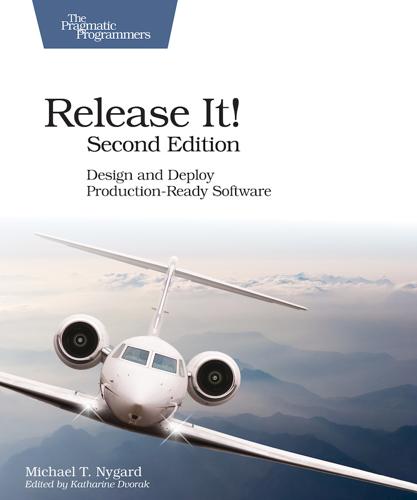
The Nature of Software Development: Keep It Simple, Make It Valuable, Build It Piece by Piece
by
Ron Jeffries
Published 14 Aug 2015
Timeouts have natural synergy with circuit breakers. A circuit breaker can tabulate timeouts, tripping to the “off” state if too many occur. The Timeouts pattern and the Fail Fast pattern (which I discus in Fail Fast) both address latency problems. The Timeouts pattern is useful when you need to protect your system from someone else’s failure. Fail Fast is useful when you need to report why you won’t be able to process some transaction. Fail Fast applies to incoming requests, whereas the Timeouts pattern applies primarily to outbound requests. They’re two sides of the same coin. Timeouts can also help with unbounded result sets by preventing the client from processing the entire result set, but they aren’t the most effective approach to that particular problem.
…
Less than one year after we launched, the drives filled up. Sure enough, the one place we broke the Fail Fast principle was the one place our renderer failed to report errors before wasting effort. It would render images—several minutes of compute time—and then throw an exception. Another way to fail fast in a web application is to perform basic parameter-checking in the servlet or controller that receives the request, before talking to the database. This would be a good reason to move some parameter checking out of domain objects into something like a “Query object.” Even when failing fast, be sure to report a system failure (resources not available) differently than an application failure (parameter violations or invalid state).
…
Reporting a generic “error” message may cause an upstream system to trip a circuit breaker just because some user entered bad data and hit Reload three or four times. The Fail Fast pattern improves overall system stability by avoiding slow responses. Together with timeouts, failing fast can help avert impending cascading failures. It also helps maintain capacity when the system is under stress because of partial failures. Remember This Avoid Slow Responses and Fail Fast. If your system cannot meet its SLA, inform callers quickly. Don’t make them wait for an error message, and don’t make them wait until they time out.
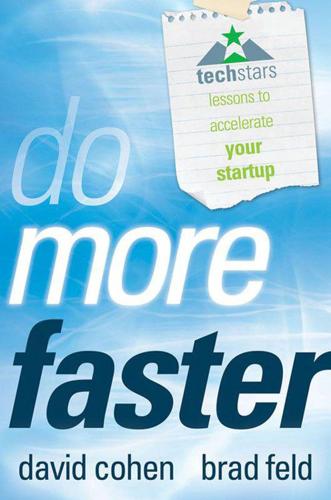
Do More Faster: TechStars Lessons to Accelerate Your Startup
by
Brad Feld
and
David Cohen
Published 18 Oct 2010
However, with each iteration in the marketplace, you give yourself a better chance for success. You miss 100 percent of the shots you don't take. You only truly fail if you stop trying. So fail fast. Learn quickly. And start again. Too many people take the phrase “fail fast” literally. It doesn't mean that you should make sure that your business fails fast. It means that you should be happy about having a bunch of little failures along the path to success, because if you're not failing, you're probably just not trying enough stuff. Next Big Sound did an amazing job of failing fast. Alex and his partners woke up on the second day of TechStars and immediately began exploring several new ideas that grew out of their interest in the music industry and independent bands.
…
After showing this early version to a number of people, they kept getting feedback that they should model their user interface after popular web analytics products like Compete and Quantcast, which tracked similar data for web sites instead of band mentions and song plays. They failed fast, scrapping their initial user interface and coming up with the one they use today. During the summer, Alex and his partners listened attentively to all of the feedback they got, tried lots of different things, and continued to succeed by failing fast. On investor day, Alex completely nailed his presentation and Next Big Sound quickly raised a venture financing after the 2009 program ended. Pull the Plug When You Know It's Time Paul Berberian Paul is a serial entrepreneur, having co-founded five companies, including Raindance Communications, which went public in 2000 and was acquired by West in 2006.
…
Contents Title Page Copyright Dedication Foreword Preface About TechStars THEME 1: IDEA AND VISION Trust Me, Your Idea Is Worthless Start With Your Passion Look for the Pain Get Feedback Early Usage Is Like Oxygen for Ideas Forget the Kitchen Sink Find That One Thing They Love Don't Plan. Prototype! You Never Need Another Original Idea Get It Out There Avoid Tunnel Vision Focus Iterate Again Fail Fast Pull the Plug When You Know It's Time THEME 2: PEOPLE Don't Go It Alone Avoid Co-Founder Conflict Hire People Better than You Hire Slowly, Fire Quickly If You Can Quit, You Should Build a Balanced Team Startups Seek Friends Engage Great Mentors Define Your Culture Two Strikes and You Are Out Karma Matters Be Open to Randomness THEME 3: EXECUTION Do More Faster Assume that You're Wrong Make Decisions Quickly It's Just Data Use Your Head, then Trust Your Gut Progress Equals Validated Learning The Plural of Anecdote Is Not Data Don't Suck at E-Mail Use What's Free Be Tiny Until You Shouldn't Be Don't Celebrate the Wrong Things Be Specific Learn from Your Failures Quality over Quantity Have a Bias Toward Action Do or Do Not, There Is No Try THEME 4: PRODUCT Don't Wait Until You Are Proud of Your Product Find Your Whitespace Focus on What Matters Obsess over Metrics Avoid Distractions Know Your Customer Beware the Big Companies Throw Things Away Pivot THEME 5: FUNDRAISING You Don't Have to Raise Money There's More than One Way to Raise Money Don't Forget about Bootstrapping Beware of Angel Investors Who Aren’t Seed Investors Care about Three Things Practice Like You Play If You Want Money, Ask for Advice Show, Don't Tell Turn the Knife after You Stick It in Don't Overoptimize on Valuations Get Help with Your Term Sheet Focus on the First One-Third THEME 6: LEGAL AND STRUCTURE Form the Company Early Choose the Right Company Structure Default to Delaware Lawyers Don't Have to Be Expensive Vesting Is Good for You Your Brother-in-Law Is Probably Not the Right Corporate Lawyer To 83(b) or Not to 83(b), There Is No Question THEME 7: WORK–LIFE BALANCE Discover Work–Life Balance Practice Your Passion Follow Your Heart Turn Work into Play Get Out from behind Your Computer Stay Healthy Get Away from It All THE EVOLUTION OF TECHSTARS What Motivated Me to Start TechStars?
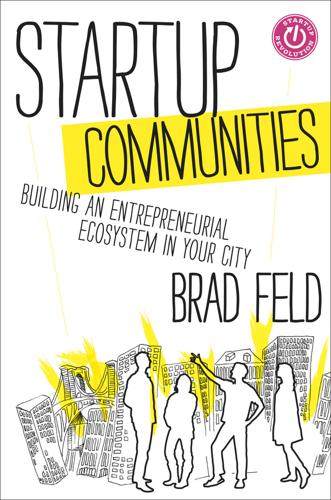
Startup Communities: Building an Entrepreneurial Ecosystem in Your City
by
Brad Feld
Published 8 Oct 2012
I use this approach in many different areas of my life in which I initiate projects and provide leadership. This approach is inclusive because I am giving people who want to engage an opportunity, but they have to do something to actually engage. Of course, when they do engage there is a much more significant level of involvement. EXPERIMENT AND FAIL FAST The phrase fail fast is used throughout the startup ecosystem and has come to encapsulate the notion of continually trying new things, measuring the results, and either modifying the approach or doubling down, depending on the outcome. Eric Ries in his book The Lean Startup and the corresponding activity around the lean startup methodology has recently popularized this.
…
Eric Ries in his book The Lean Startup and the corresponding activity around the lean startup methodology has recently popularized this. This approach is a key attribute of vibrant startup communities. Think of your startup community as a lean startup—one that needs to try lots of experiments, measure the results, and pivot when things aren’t working. It’s not that you should fail fast across the entire startup community; instead you should fail fast on specific initiatives that don’t go anywhere, attract little interest, or generate no impact. Within a startup community, there are often grand plans that are defined at the outset of a new set of initiatives. This especially happens when one of the feeders tries to play a leadership role, a broad new program such as Startup Colorado emerges, or we enter an election cycle and the new administration (federal, state, or local) starts a new innovation-related program.
…
CONTENTS Foreword Preface Acknowledgments Chapter One: Introduction The Example of Boulder How this Book Works Chapter Two: The Boulder Startup Community Boulder as a Laboratory Before the Internet (1970–1994) Pre-Internet Bubble (1995–2000) The Collapse of the Internet Bubble (2001–2002) The Beginning of the Next Wave (2003–2011) An Outsider’s View of Boulder Chapter Three: Principles of a Vibrant Startup Community Historical Frameworks The Boulder Thesis Led by Entrepreneurs Long-Term Commitment Foster a Philosophy of Inclusiveness Engage the Entire Entrepreneurial Stack Chapter Four: Participants in a Startup Community Entrepreneurs Government Universities Investors Mentors Service Providers Large Companies The Importance of Both Leaders and Feeders Chapter Five: Attributes of Leadership in a Startup Community Be Inclusive Play a Non-Zero-Sum Game Be Mentorship Driven Have Porous Boundaries Give People Assignments Experiment and Fail Fast Chapter Six: Classical Problems The Patriarch Problem Complaining About Capital Being Too Reliant on Government Making Short-Term Commitments Having a Bias Against Newcomers Attempt by a Feeder to Control the Community Creating Artificial Geographic Boundaries Playing a Zero-Sum Game Having a Culture of Risk Aversion Avoiding People Because of Past Failures Chapter Seven: Activities and Events Young Entrepreneurs Organization Office Hours Boulder Denver New Tech Meetup Boulder Open Coffee Club Startup Weekend Ignite Boulder Boulder Beta Boulder Startupdigest Cu New Venture Challenge Boulder Startup Week Entrepreneurs Foundation of Colorado Chapter Eight: The Power of Accelerators The Spread of Techstars to Boston and Seattle Techstars Expands to New York Accelerators are Different than Incubators University Accelerators Chapter Nine: University Involvement Silicon Flatirons Some Components of CU Boulder Challenges to Entrepreneurship Programs at Universities Why they Don’t Work in Isolation The Real Value—Fresh Blood into the System The Power of Alumni Chapter Ten: Contrasts between Entrepreneurs and Government Self-Aware Versus Not Self-Aware Bottom Up Versus Top Down Micro Versus Macro Action Versus Policy Impact Versus Control Chapter Eleven: The Power of the Community Give Before You Get Everyone is a Mentor Embrace Weirdness Be Open to Any Idea Be Honest Go for a Walk The Importance of the After-Party Chapter Twelve: Broadening a Successful Startup Community Parallel Universes Integration With the Rest of Colorado Lack of Diversity Space Chapter Thirteen: Myths about Startup Communities We Need to Be Like Silicon Valley We Need More Local Venture Capital Angel Investors Must Be Organized Chapter Fourteen: Getting Started Getting Startup Iceland Started Big Omaha Startup America Partnership Do or Do Not, There is No Try About the Author Index Excerpt from Startup Life Cover illustrations: Silhoueted figure: © Leontura/istockphoto; Silhoueted women and man: © edge69/istockphoto; City Background: C.
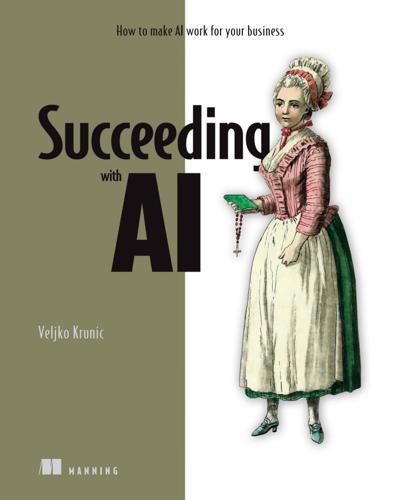
Succeeding With AI: How to Make AI Work for Your Business
by
Veljko Krunic
Published 29 Mar 2020
The criteria for selecting your first AI project to run is therefore simple: choose the project that’s fast to deliver and has significant business value. When you’ve chosen that project, you need to do the following: Define the research question that the project would answer (section 3.3.1). Organize the project so that if it fails, it fails fast (section 3.3.2). 70 CHAPTER 3 Choosing your first AI project The rest of this section shows you how to define the research question and explains what fail fast means. 3.3.1 Define the research question You’ve chosen your first AI project. That project has a clear business question that needs to be answered, and that question is written in a form that a business decision maker will understand.
…
. MinMax analysis allows you to determine if your ML pipeline already meets business goals, needs improvement to be able to meet those goals, or is incapable of meeting those goals. MinMax analysis helps you implement the “If you’re going to fail, fail fast!” policy on AI projects. Guiding an AI project to success This chapter covers Performing sensitivity analysis on the ML pipeline Assessing advanced sensitivity analysis methods Accounting for the effects of time in your pipeline Organizing a project so that “If you fail, you fail fast” This chapter answers the questions: “What should I do when my ML pipeline needs improvement, and how do I know that I’m improving the right stage of the ML pipeline?”
…
On early AI projects, you’re on the rich hunting grounds, and you should think like a hunter (section 3.1.1)—don’t spend time chasing mammoths, catch rabbits Concluding your AI project 191 instead. If you’re hunting for a while and figure out that an animal you’re following is a mammoth that’s quite good at camouflaging itself as a rabbit, you should abandon the chase and find a rabbit. If you’re going to fail, fail fast Your project management approach should be biased toward failing fast. You should make the tradeoff of accepting the possibility of giving up too early and missing a potential solution if that means you’ll avoid situations in which you’re stuck for a long time on something that doesn’t work in the end. Remember that the primary way AI initiatives die is that they persist in problematic projects for far too long and have nothing to show for it at the end (section 3.1.1).
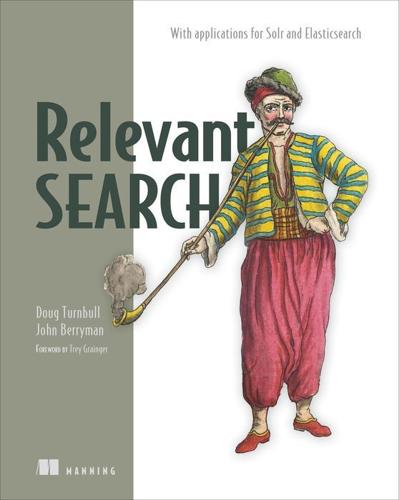
Relevant Search: With Examples Using Elasticsearch and Solr
by
Doug Turnbull
and
John Berryman
Published 30 Apr 2016
We refer to this style of work as iterative and fail fast. It’s iterative in the sense that it focuses on delivering a real, interactive search solution quickly for evaluation. It’s fail fast because it anticipates immediate, small failures as the best mechanism to adjust course and avoid more-catastrophic failures. Figure 10.2 illustrates the ideal iterative cycle: bite-sized changes are delivered for evaluation, feedback is observed, and the course is adjusted over and over. Figure 10.2. Ideal search relevance iteration: trying simple adjustments, soliciting feedback, and failing fast in order to continuously improve Feedback is the most important ingredient.
…
Search is a place ripe for premature optimization. You’re likely to reach the heat death of the universe before achieving a perfect search solution in every direction. You know there will be relevance problems, but you don’t quite know what those are until you experiment with user searches. There are few areas that emphasize “fail fast” as much as search relevance. Load your data, get something basic working, find where it’s broken, reconfigure, reindex if need be, requery, rinse, and repeat. Keep going until you’ve reached diminishing returns. For the purpose of this chapter, this means solving where exactly the source data model falls apart, and where to spend careful time with signal modeling.
…
By building a user-focused culture, you’ll end up at a place where data plays its appropriate role. 10.3. Flying relevance-blind You often start with a more mundane problem: your organization isn’t aware of search relevance. Stakeholders don’t see relevance as foundational to their success. Instead of iterations that fail fast, the only iteration you undergo is the painful process of developing a complete search solution, shipping it to users, and then painfully learning upon delivery how disappointed they are. Unfortunately, many of your colleagues may assume that the search engine has some kind of built-in Google-like intelligence.
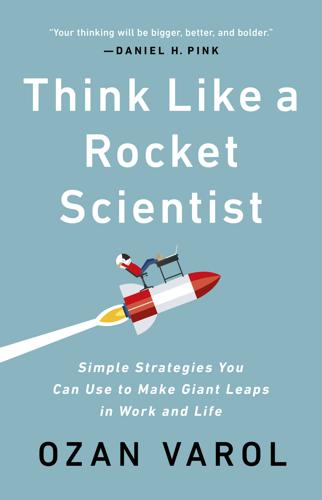
Think Like a Rocket Scientist: Simple Strategies You Can Use to Make Giant Leaps in Work and Life
by
Ozan Varol
Published 13 Apr 2020
The pendulum swung too far in the other direction. The Problem with Fail Fast The fail-fast mantra has no place in rocket science. When each failure is horrifically expensive—in terms of both money and human lives—we can’t rush to the launch pad with a crappy rocket and fail as fast as possible. Even outside rocket science, the fail-fast refrain is misguided. When entrepreneurs are too busy failing fast and celebrating it, they stop learning from their mistakes. The clinking of champagne glasses mutes the feedback they might otherwise receive from failure. Failing fast, in other words, doesn’t magically produce success.
…
Here’s what most people get wrong about persistence. Persistence doesn’t mean repeatedly doing what’s failing. Remember the old adage about the futility of doing the same thing over and over again and expecting different results? The goal isn’t to fail fast. It’s to learn fast. We should be celebrating the lessons from failure—not failure itself. Learn Fast, Not Fail Fast The hardest part of getting to Mars is clearing a hurdle right here on Earth. NASA doesn’t build and operate Martian spacecraft all on its own.24 When it’s planning a new mission, it makes a formal announcement that describes, in general terms, the spacecraft that NASA intends to send and the science it expects the spacecraft to conduct.
…
You’ll also learn how the same simple strategy that saved hundreds of thousands of premature infants also salvaged the Mars Exploration Rovers mission after it was canceled. Finally, I’ll share what one of the most misunderstood scientific concepts can teach you about human behavior. The third and final stage is achieve. You’ll learn why the final ingredients for unlocking your full potential include both success and failure. You’ll discover why the “fail fast, fail often” mantra can be a recipe for disaster. I’ll reveal how the same breakdown that led to the collapse of an industry giant also caused a space shuttle to explode. I’ll explain why companies pay lip service to learning from failure but don’t follow through in practice. We’ll discover the surprising benefits of treating success and failure the same and why top performers see uninterrupted success as a warning sign.
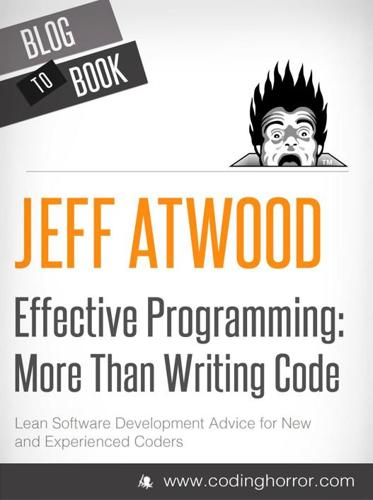
Effective Programming: More Than Writing Code
by
Jeff Atwood
Published 3 Jul 2012
Mike points out that there’s a natural tension between… failing immediately when your program encounters a problem, eg “fail fast” attempting to recover from the failure state and proceed normally The philosophy behind “fail fast” is best explained in Jim Shore’s article. Some people recommend making your software robust by working around problems automatically. This results in the software “failing slowly.” The program continues working right after an error but fails in strange ways later on. A system that fails fast does exactly the opposite: when a problem occurs, it fails immediately and visibly. Failing fast is a nonintuitive technique: “failing immediately and visibly” sounds like it would make your software more fragile, but it actually makes it more robust.
…
Failing fast is a nonintuitive technique: “failing immediately and visibly” sounds like it would make your software more fragile, but it actually makes it more robust. Bugs are easier to find and fix, so fewer go into production. Fail fast is reasonable advice — if you’re a developer. What could possibly be easier than calling everything to a screeching halt the minute you get a byte of data you don’t like? Computers are spectacularly unforgiving, so it’s only natural for developers to reflect that masochism directly back on users. But from the user’s perspective, failing fast isn’t helpful. To them, it’s just another meaningless error dialog preventing them from getting their work done. The best software never pesters users with meaningless, trivial errors — it’s more considerate than that.

Building Microservices
by
Sam Newman
Published 25 Dec 2014
If this call is being made as part of a synchronous call chain, however, it is probably better to fail fast. This could mean propagating an error up the call chain, or a more subtle degrading of functionality. If we have this mechanism in place (as with the circuit breakers in our home), we could use them manually to make it safer to do our work. For example, if we wanted to take a microservice down as part of routine maintenance, we could manually blow all the circuit breakers of the dependent systems so they fail fast while the microservice is offline. Once it’s back, we can reset the circuit breakers and everything should go back to normal.
…
Similar concerns would apply even if you’re not using HTTP; knowing the difference between a request that was OK and processed correctly, a request that was bad and thus prevented the service from doing anything with it, and a request that might be OK but we can’t tell because the server was down is key to ensuring we can fail fast and track down issues. If our services play fast and loose with these rules, we end up with a more vulnerable system. Governance Through Code Getting together and agreeing on how things can be done is a good idea. But spending time making sure people are following these guidelines is less fun, as is placing a burden on developers to implement all these standard things you expect each service to do.
…
In some of the worst examples, developers may be using remote calls without knowing it if the abstraction is overly opaque. You need to think about the network itself. Famously, the first of the fallacies of distributed computing is “The network is reliable”. Networks aren’t reliable. They can and will fail, even if your client and the server you are speaking to are fine. They can fail fast, they can fail slow, and they can even malform your packets. You should assume that your networks are plagued with malevolent entities ready to unleash their ire on a whim. Therefore, the failure modes you can expect are different. A failure could be caused by the remote server returning an error, or by you making a bad call.
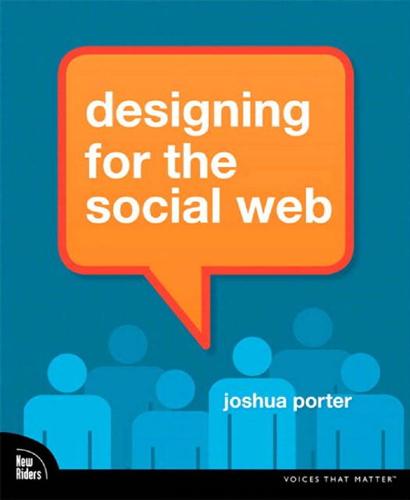
Designing for the Social Web
by
Joshua Porter
Published 18 May 2008
They don’t see it as trouble to use software that isn’t perfect, in fact, they want to help make it perfect. 12 http://corkd.com 13 http://www.simplebits.com/notebook/2006/05/30/update2.html 55 56 DESIGNING FOR THE SOCIAL WEB Release Early, Release Often Eric Raymond, in the classic open-source manifesto The Cathedral and the Bazaar, says that open-source succeeds in big part by adopting a strategy of “release early and often.”14 This has several effects: . Builds goodwill . Shows people that you’re there and improving . Gets people coming back often . Lets you fail fast A major benefit of fast iteration is you also fail fast. Failing fast means you invest less time in the things that don’t work. If you find what doesn’t work quickly, then you quickly take action to turn it into something that does work. Ironically, teams that fail fast improve faster than those who try to get everything right at every iteration. The reason is simple: Teams trying to get everything right fail as often as everyone else does.
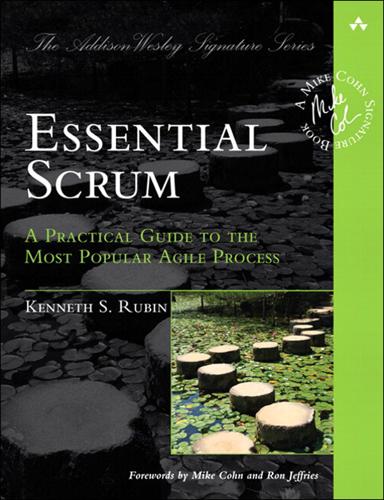
Essential Scrum: A Practical Guide to the Most Popular Agile Process
by
Kenneth S. Rubin
Published 19 Jul 2012
In the case of SR4U, Review Everything’s policy is that funding is fluid and never given in large chunks but rather in sufficient quantity to validate the next important assumption. Based on feedback and learning, senior management might well continue to spend money that has already been allocated, allocate additional money, or stop funding any future development. Learn Fast and Pivot (aka Fail Fast) Envisioning is part of a learn-fast-and-pivot cycle. This approach is sometimes referred to by the catchy alliteration fail fast. Simply put, we responsibly and efficiently manage our resources to quickly and cheaply perform envisioning. Then we quickly and cheaply validate our customer, feature, and solution knowledge and assumptions to see whether our vision and product plans meet our business expectations.
…
ScrumMaster Combined with Other Roles Closing Chapter 11 Development Team Overview Role-Specific Teams Principal Responsibilities Perform Sprint Execution Inspect and Adapt Each Day Groom the Product Backlog Plan the Sprint Inspect and Adapt the Product and Process Characteristics/Skills Self-Organizing Cross-Functionally Diverse and Sufficient T-Shaped Skills Musketeer Attitude High-Bandwidth Communications Transparent Communication Right-Sized Focused and Committed Working at a Sustainable Pace Long-Lived Closing Chapter 12 Scrum Team Structures Overview Feature Teams versus Component Teams Multiple-Team Coordination Scrum of Scrums Release Train Closing Chapter 13 Managers Overview Fashioning Teams Define Boundaries Provide a Clear Elevating Goal Form Teams Change Team Composition Empower Teams Nurturing Teams Energize People Develop Competence Provide Functional-Area Leadership Maintain Team Integrity Aligning and Adapting the Environment Promote Agile Values Remove Organizational Impediments Align Internal Groups Align Partners Managing Value-Creation Flow Take a Systems Perspective Manage Economics Monitor Measures and Reports Project Managers Project Management Responsibilities on a Scrum Team Retaining a Separate Project Manager Role Closing PART III Planning Chapter 14 Scrum Planning Principles Overview Don’t Assume We Can Get the Plans Right Up Front Up-Front Planning Should Be Helpful without Being Excessive Keep Planning Options Open Until the Last Responsible Moment Focus More on Adapting and Replanning Than on Conforming to a Plan Correctly Manage the Planning Inventory Favor Smaller and More Frequent Releases Plan to Learn Fast and Pivot When Necessary Closing Chapter 15 Multilevel Planning Overview Portfolio Planning Product Planning (Envisioning) Vision High-Level Product Backlog Product Roadmap Release Planning Sprint Planning Daily Planning Closing Chapter 16 Portfolio Planning Overview Timing Participants Process Scheduling Strategies Optimize for Lifecycle Profits Calculate Cost of Delay Estimate for Accuracy, Not Precision Inflow Strategies Apply the Economic Filter Balance the Arrival Rate with the Departure Rate Quickly Embrace Emergent Opportunities Plan for Smaller, More Frequent Releases Outflow Strategies Focus on Idle Work, Not Idle Workers Establish a WIP Limit Wait for a Complete Team In-Process Strategies Use Marginal Economics Closing Chapter 17 Envisioning (Product Planning) Overview Timing Participants Process SR4U Example Visioning High-Level Product Backlog Creation Product Roadmap Definition Other Activities Economically Sensible Envisioning Target a Realistic Confidence Threshold Focus on a Short Horizon Act Quickly Pay for Validated Learning Use Incremental/Provisional Funding Learn Fast and Pivot (aka Fail Fast) Closing Chapter 18 Release Planning (Longer-Term Planning) Overview Timing Participants Process Release Constraints Fixed Everything Fixed Scope and Date Fixed Scope Fixed Date Variable Quality Updating Constraints Grooming the Product Backlog Refine Minimum Releasable Features (MRFs) Sprint Mapping (PBI Slotting) Fixed-Date Release Planning Fixed-Scope Release Planning Calculating Cost Communicating Communicating Progress on a Fixed-Scope Release Communicating Progress on a Fixed-Date Release Closing PART IV Sprinting Chapter 19 Sprint Planning Overview Timing Participants Process Approaches to Sprint Planning Two-Part Sprint Planning One-Part Sprint Planning Determining Capacity What Is Capacity?
…
We would be better off just flipping the coin (or making an educated guess) and, if we’re wrong, simply redoing the work using the other architecture. Actually, given today’s ever-advancing technologies, this scenario is not as far-fetched as it may sound. It’s an example of what some people call a fail-fast strategy (try something, get fast feedback, and rapidly inspect and adapt). Gathering Stories How do user stories come into existence? Traditional approaches to requirements gathering involve asking the users what they want. I have never been very successful with that approach. In my experience, users are far better critics than they are authors.
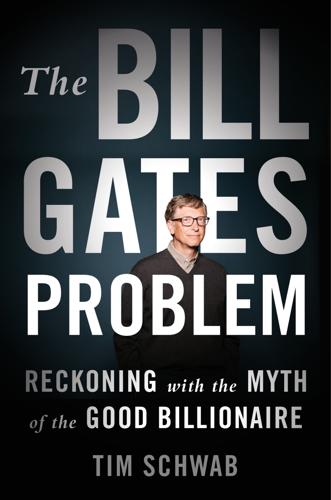
The Bill Gates Problem: Reckoning With the Myth of the Good Billionaire
by
Tim Schwab
Published 13 Nov 2023
Nevertheless, Gates Sr.’s advocacy around the estate tax, as a form of gratitude for friendly government policies, shows how much berth there is for reforms against the growing appearance of oligarchy, in which the wealthiest industry captains pay the least in taxes and have the loudest voices in our democracy. 4 Fail Fast “Failing fast” is en vogue as a mantra in corporate management, which means it has also become a way of life at the Gates Foundation, which pulls the best and brightest employees from Big Pharma, Big Tech, Big Consulting, and MBA programs. “One of the great personal virtues of Bill and Melinda—and one of the key reasons I have devoted the bulk of my career to the Gates Foundation—is their willingness to change their minds,” CEO Mark Suzman noted in the foundation’s 2022 public-facing annual letter.
…
“This is particularly true when compelling evidence reveals the potential for more effective ways to save and improve lives through our work. When we take risky bets, it is inevitable that some will fail. But rather than become more conservative, Bill and Melinda have chosen to fail fast, learn, and improve. From gender equality to K–12 education to climate adaptation investments as part of our agricultural development program, they have time and again approved new approaches and deprioritized older ones based on evidence.” The “fail fast” culture is particularly prevalent in the world of start-ups, where the foundation works extensively. The Gates Foundation has given more than $2 billion to private companies in charitable grants alongside a $2.5 billion charitable investment fund the foundation uses to push money into commercial enterprises.
…
The Gates Foundation has given more than $2 billion to private companies in charitable grants alongside a $2.5 billion charitable investment fund the foundation uses to push money into commercial enterprises. Some of this money has gone to pharma giants like GSK and Merck ($65 million and $47 million in charitable donations, respectively), but much of it has gone to small start-ups whose names you wouldn’t recognize. When Gates’s private-sector partners fail—or fail fast—it doesn’t always mean the foundation walks away empty-handed. That’s because it makes its partners sign “global access agreements” that give it a “worldwide, non-exclusive, perpetual, irrevocable, fully-paid up, royalty-free license to the Funded Developments and the background intellectual property.”
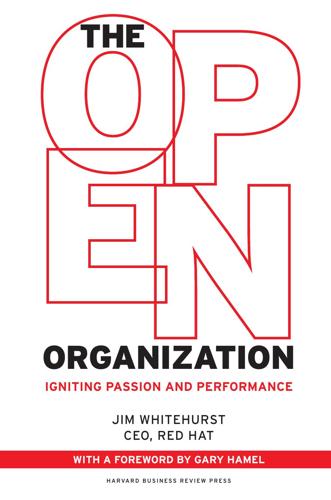
The Open Organization: Igniting Passion and Performance
by
Jim Whitehurst
Published 1 Jun 2015
Unlike the business landscape, where companies have an incentive to hide both successes (for reasons of competitive advantage) and failures (to forestall any perception of weakness), open source projects advertise their successes and get failure for free.”8 Like so many other aspects of its management system, Red Hat has adopted this same principle for internal initiatives. We call our internal corollary to release early, release often “failing fast.” Failing fast recognizes that many things we try may not work. But rather than spending tons of time trying to analyze which will work and which will not, we allow many small experiments. Those that gain momentum continue to grow, while those that don’t are allowed to wither away. In this way, we can try many things without any single one creating too much risk for the company.
…
Empowering your workers to act unilaterally to changes they observe requires that they have the knowledge and context of the strategy so that they act appropriately. Engagement, therefore, is a critical element to the distributed management system we have at Red Hat. Even so, isn’t there a risk that workers will make poor decisions? Yes, but that’s mitigated by the adoption of the open source principle of “release early; release often”—or “fail fast”—that entails tightening that feedback loop (I’ll cover this in more detail in chapter 7). Here at Red Hat, people managers play a critical role in this process. They must determine the appropriate amount of latitude that each individual is capable of handling, plus develop, coach, and stretch their capabilities along the way.
…
By the time we decide to commercialize an offering, the project has grown to the point where the decision is obvious. Projects of all kinds, beyond just software, naturally emerge throughout Red Hat until it’s obvious to everyone that someone needs to work on it full-time. The concept of making small, incremental advances and failing fast aren’t unique to open source and Red Hat. Scott Cook, founder of software company Intuit, which makes Quicken and TurboTax, among other products, once said, “When the bosses make the decisions, decisions are made by politics, persuasion, and PowerPoint. When you make decisions through experiment, the best idea can prove itself.”
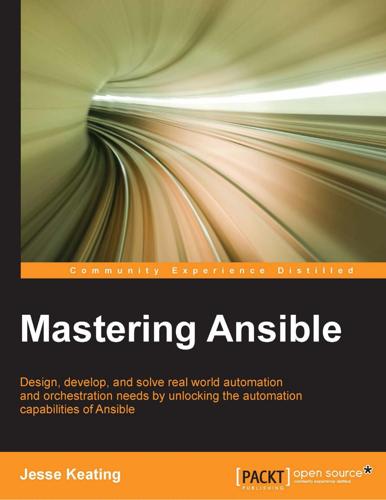
Mastering Ansible
by
Jesse Keating
Table of Contents Preface Chapter 1: System Architecture and Design of Ansible Ansible version and configuration Inventory parsing and data sources The static inventory Inventory variable data Dynamic inventories Run-time inventory additions Inventory limiting Playbook parsing Order of operations Relative path assumptions Play behavior keys Host selection for plays and tasks Play and task names Module transport and execution Module reference Module arguments Module transport and execution Task performance Variable types and location Variable types Accessing external data Variable precedence Precedence order vii 1 2 3 3 4 7 9 9 12 13 15 17 18 19 21 22 22 24 25 26 26 28 28 28 Extra-vars Connection variables Most everything else The rest of the inventory variables 29 29 29 30 [i] Table of Contents Facts discovered about a system Role defaults 30 30 Merging hashes Summary Chapter 2: Protecting Your Secrets with Ansible Encrypting data at rest Things Vault can encrypt Creating new encrypted files The password prompt The password file The password script Encrypting existing files Editing encrypted files Password rotation for encrypted files Decrypting encrypted files Executing ansible-playbook with Vault-encrypted files Protecting secrets while operating Secrets transmitted to remote hosts Secrets logged to remote or local files Summary Chapter 3: Unlocking the Power of Jinja2 Templates Control structures Conditionals Inline conditionals 30 32 33 33 34 35 36 37 38 38 40 41 42 43 44 45 45 47 49 49 49 52 Loops 53 Macros 58 Filtering loop items Loop indexing 54 55 Macro variables 59 Data manipulation Syntax Useful built-in filters 67 67 68 default count random round 68 69 69 69 Useful Ansible provided custom filters 69 Omitting undefined arguments 76 Filters related to task status shuffle Filters dealing with path names Base64 encoding Searching for content [ ii ] 70 71 71 73 75 Table of Contents Python object methods 77 String methods List methods int and float methods 77 78 78 Comparing values Comparisons Logic Tests Summary 79 79 79 79 80 Chapter 4: Controlling Task Conditions 81 Chapter 5: Composing Reusable Ansible Content with Roles 95 Defining a failure Ignoring errors Defining an error condition Defining a change Special handling of the command family Suppressing a change Summary Task, handler, variable, and playbook include concepts Including tasks Passing variable values to included tasks Passing complex data to included tasks Conditional task includes Tagging included tasks 81 81 83 88 90 92 93 96 96 99 101 103 105 Including handlers Including variables 107 109 Including playbooks Roles Role structure 115 115 115 Role dependencies 118 vars_files Dynamic vars_files inclusion include_vars extra-vars 109 110 111 114 Tasks Handlers Variables Modules Dependencies Files and templates Putting it all together 116 116 116 116 117 117 117 Role dependency variables Tags Role dependency conditionals 118 119 120 [ iii ] Table of Contents Role application 120 Role sharing 126 Mixing roles and tasks 123 Ansible Galaxy 126 Summary 131 Chapter 6: Minimizing Downtime with Rolling Deployments 133 Chapter 7: Troubleshooting Ansible 155 In-place upgrades Expanding and contracting Failing fast The any_errors_fatal option The max_fail_percentage option Forcing handlers Minimizing disruptions Delaying a disruption Running destructive tasks only once Summary Playbook logging and verbosity Verbosity Logging Variable introspection Variable sub elements Subelement versus Python object method 133 136 139 140 142 144 147 147 152 154 155 156 156 157 159 162 Debugging code execution Debugging local code 163 164 Debugging remote code 172 Debugging inventory code Debugging Playbook code Debugging runner code 164 168 169 Debugging the action plugins 176 Summary 177 Chapter 8: Extending Ansible 179 Developing modules The basic module construct Custom modules Simple module 179 180 180 181 Module documentation Providing fact data Check mode 184 190 191 Developing plugins Connection type plugins Shell plugins 193 193 193 [ iv ] Table of Contents Lookup plugins Vars plugins Fact caching plugins Filter plugins Callback plugins Action plugins Distributing plugins Developing dynamic inventory plugins Listing hosts Listing host variables Simple inventory plugin 193 194 194 194 196 198 199 199 201 201 201 Summary 208 Optimizing script performance Index 206 209 [v] Preface Welcome to Mastering Ansible, your guide to a variety of advanced features and functionality provided by Ansible, which is an automation and orchestration tool.
…
In this chapter, we'll walk through a couple of common deployment strategies and showcase the Ansible features that will be useful within those strategies. We'll also discuss a couple of other deployment considerations that are common across both deployment strategies, which are: • In-place upgrades • Expanding and contracting • Failing fast • Minimizing disruptive actions In-place upgrades The first type of deployment we'll cover is in-place upgrades. This style of deployment operates on infrastructure that already exists in order to upgrade the existing application. This model can be seen as a traditional model that existed when the creation of new infrastructure was a costly endeavor in terms of both time and money
…
This playbook can be extended to decommission the old version of the servers, or that action may happen at a different time, when it has been decided that a rollback to the old version capability is no longer necessary. The expand and contract strategy can involve more tasks, and even separate playbooks for creating a golden image set, but the benefits of fresh infrastructure for every release far outweigh the extra tasks or added complexity of creation followed by deletion. Failing fast When performing an upgrade of an application, it may be desirable to fully stop the deployment at any sign of error. A partially upgraded system with mixed versions may not work at all, so continuing with part of the infrastructure while leaving the failed systems behind can lead to big problems.

Smartcuts: How Hackers, Innovators, and Icons Accelerate Success
by
Shane Snow
Published 8 Sep 2014
I’m not being contrarian for the sake of it; I’m hoping to spark lateral thinking when it comes to success, indeed to show that lateral thinking is how the most successful people have always made it. In the following chapters, I’ll explain why kids shouldn’t be taught multiplication tables, where the fashionable “fail fast and fail often” mantra of the Lean Startup movement breaks down, and how momentum—not experience—is the single biggest predictor of business and personal success. I’ll debunk our common myths about mentorship and paying dues. And I’ll show why, paradoxically, it’s easier to build a huge business than a small one.
…
With this process, The Second City transforms failure (something that implies finality) into simply feedback (something that can be used to improve). Hundreds of times a week. The Silicon Valley mantra “fail often” actually has a second part to it. More often than not, Valley startups will say, “fail fast and fail often.” This gets at the principle of rapid feedback. But failing implies a finality, a funeral, an amen. And according to The Second City, that’s not necessary. THE SECOND CITY MANAGES to accomplish three things to accelerate its performers’ growth: (1) it gives them rapid feedback; (2) it depersonalizes the feedback; and (3) it lowers the stakes and pressure, so students take risks that force them to improve.
…
NPR lists various stars to emerge from the school, and quotes the thing about “Harvard of ha-ha” from author Mike Thomas at David Schaper, “The Second City at 50: The Harvard of Ha Ha,” NPR, December 11, 2009, http://www.npr.org/templates/story/story.php?storyId=121355679 (accessed February 15, 2014). See also: Mike Thomas, The Second City Unscripted: Revolution and Revelation at the World-Famous Comedy Theater (Villard, 2009). 59 “Fail often” is a guiding aphorism: “Fail fast, fail often” is a much-chanted mantra of Silicon Valley as of the mid-2000s, and is attributed variously to gurus like Seth Godin and Eric Ries. The earliest published attribution I could find is a 1997 quote attributed to IDEO founder David Kelley: Anna Muoio, “They Have a Better Idea . . . Do You?”
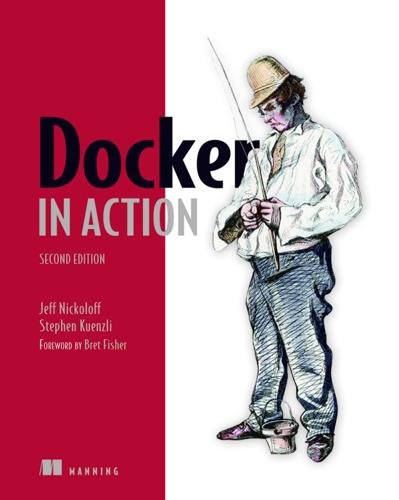
Docker in Action
by
Jeff Nickoloff
and
Stephen Kuenzli
Published 10 Dec 2019
Environmental preconditions validation Failure modes are difficult to communicate and can catch someone off guard if they occur at arbitrary times. If container configuration problems always cause failures at startup time for an image, users can be confident that a started container will keep running. In software design, failing fast and precondition validation are best practices. It makes sense that the same should hold true for image design. The preconditions that should be evaluated are assumptions about the context. Docker containers have no control over the environment where they’re created. They do, however, have control of their own execution.
…
They do, however, have control of their own execution. An image author can solidify the user experience of their image by introducing environment and dependency validation prior to execution of the main task. A container user will be better informed about the requirements of an image if containers built from that image fail fast and display descriptive error messages. For example, WordPress requires certain environment variables to be set or container links to be defined. Without that context, WordPress would be unable to connect to the database where the blog data is stored. It would make no sense to start WordPress in a container without access to the data it’s supposed to serve.
…
The topic is approachable, and several excellent resources are available for self-directed learning. This specific script uses a pattern in which both an environment variable and a container link are tested. If the environment variable is set, the container link will be ignored. Finally, the default command is executed. Images that use a startup script to validate configuration should fail fast if someone uses them incorrectly, but those same containers may fail later for other reasons. You can combine startup scripts with container restart policies to make reliable containers. But container restart policies are not perfect solutions. Containers that have failed and are waiting to be restarted aren’t running.

The End of Nice: How to Be Human in a World Run by Robots (Kindle Single)
by
Richard Newton
Published 11 Apr 2015
Accelerators are entrepreneurial bootcamps which provide embryonic companies with a workspace, business expertise and access to money, press, partners, know-how and a giant corps d’esprit. After a typical three-month program, the start-up companies are released into the commercial world to disrupt, innovate and clean up! Or fail. In fact the name of the game is fail fast. It’s the antithesis of big business thinking. In the world of tech start-ups the approach is to test your best business idea as fast as possible to see how it fails in order to better know what might work, then fix it, improve it, then test again. Failures make you stronger. The rough model for accelerators works like this: hundreds of start-up teams with a business idea apply.
…
The choreographer Twyla Tharp, in her book The Creative Habit explained that “to get the full benefit of failure you have to understand the reasons for it”. Each accelerator program ends with a demo day. On the final day the teams present new businesses to an audience of investors, media and industry big-wigs. After that they go on and disrupt a titan. Or fail fast and start again. In this way the accelerators – and there are thousands of these around the world – churn out legions of disrupters who change the rules and language of business. More than this, each of these companies and each of the individuals inside are expanding and accelerating the limits of the adjacent possible.
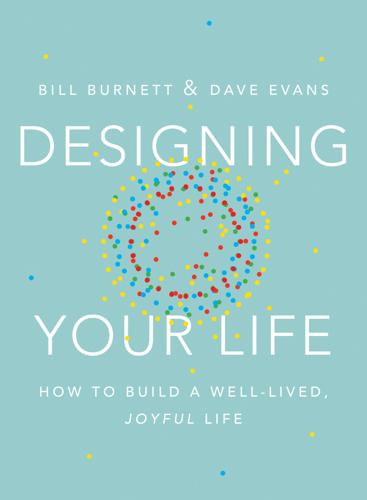
Designing Your Life: How to Build a Well-Lived, Joyful Life
by
Bill Burnett
and
Dave Evans
Published 12 Sep 2016
It is okay for prototypes to fail—they are supposed to—but well-designed prototypes teach you something about the future. Prototypes lower your anxiety, ask interesting questions, and get you data about the potential of the change that you are trying to accomplish. One of the principles of design thinking is that you want to “fail fast and fail forward,” into your next step. When you’re stuck with an anchor problem, try reframing the challenge as an exploration of possibilities (instead of trying to solve your huge problem in one miraculous leap), then decide to try a series of small, safe prototypes of the change you’d like to see happen.
…
Our prototyping process inevitably requires collaboration, working with others. Everyone is on a journey, and your prototype encounters with others will reveal their life designs and give you ideas for your own life. So—we prototype to ask good questions, create experiences, reveal our assumptions, fail fast, fail forward, sneak up on the future, and build empathy for ourselves and others. Once you accept that this is really the only way to get the data you need, prototyping becomes an integral part of your life design process. Not only is it true that doing prototyping is a good idea; it’s equally true that not prototyping is a bad and sometimes very costly idea.
…
Dave and Bill have come to trust the process of life design so completely that they don’t ever have a conversation about the right way to run their classes. When you really get the hang of the design thinking approach, you end up thinking differently about everything. This is the first level of failure immunity—using a bias to action, failing fast, and being so clear on the learning value of a failure that the sting disappears (and, of course, you learn from the failure quickly and incorporate improvements). By the way, that exercise in class went pretty well, and then we decided to jettison it anyway and keep the prior version of the exercise because it was more effective.
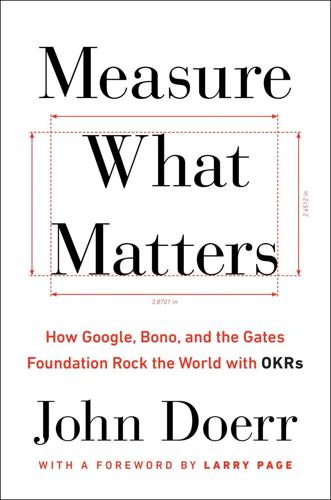
Measure What Matters: How Google, Bono, and the Gates Foundation Rock the World With OKRs
by
John Doerr
Published 23 Apr 2018
The founders were quintessential visionaries, with extreme entrepreneurial energy. What they lacked was management experience. * For Google to have real impact, or even to reach liftoff, they would have to learn to make tough choices and keep their team on track. Given their healthy appetite for risk, they’d need to pull the plug on losers—to fail fast. * Not least, they would need timely, relevant data. To track their progress. To measure what mattered. And so: On that balmy day in Mountain View, I came with my present for Google, a sharp-edged tool for world-class execution. I’d first used it in the 1970s as an engineer at Intel, where Andy Grove, the greatest manager of his or any era, ran the best-run company I had ever seen.
…
Through the open window of objectives and key results, each of you gets to know the other’s weaknesses with no worry of getting caught out. (For managers, one particular benefit of OKRs is to lead them to hires who can compensate for their own limitations.) Our people stopped dancing around their setbacks. They began to realize there was no shame in trying your hardest and failing, not when OKRs help you fail smart and fail fast. The tide turned. We began hearing comments like “I was a complete naysayer, but now I see how this can work for me.” Ninety-eight percent of the pilot group became active users of our OKR platform; 72 percent set at least one objective aligned to the company’s goals. And 92 percent of the pilot group said they now understood “what my manager expects of me.”
…
Motivate contributors less with extrinsic rewards and more with open, tangible measures of their achievement. To keep OKRs timely and relevant, have the designated shepherd ride herd over regular check-ins and progress updates. Frequent check-ins enable teams and individuals to course-correct with agility, or to fail fast. To sustain high performance, encourage weekly one-on-one OKR meetings between contributors and managers, plus monthly departmental meetings. As conditions change, feel free to revise, add, or delete OKRs as appropriate—even in mid-cycle. Goals are not written in stone. It’s counterproductive to hold stubbornly to objectives that are no longer relevant or attainable.
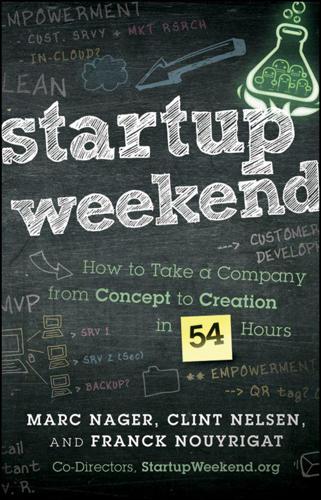
Startup Weekend: How to Take a Company From Concept to Creation in 54 Hours
by
Marc Nager
,
Clint Nelsen
and
Franck Nouyrigat
Published 8 Nov 2011
Blogs and Other Media “10 Inspiring TED Talks for Startups” http://www.readwriteweb.com/start/2010/07/ten-inspiring-ted-talks-for-st.php Jeff Bussgang, “Seeing Both Sides” http://bostonvcblog.typepad.com/vc/2009/11/what-makes-bostons-startup-scene-special.html Tom Chapman, “Building an Entrepreneurial Ecosystem: Lessons from Omaha” http://www.scribd.com/doc/60113134/Building-an-Entrepreneurial-Ecosystem-Lessons-from-Omaha Brad Feld, “Feld Thoughts” http://www.feld.com/wp/ William Fisher, “View from the Fishbowl: Noodling” (Silicon Prairie News) http://www.siliconprairienews.com/2011/06/view-from-the-fishbowl-noodling Daniel Isenberg, “How to Start an Entrepreneurial Ecosystem” (HBR blog network) http://hbr.org/product/how-to-start-an-entrepreneurial-revolution/an/R1006A-HCB-ENG Eric Koester, “Zaarly on Capitol Hill: Why the Startup Ecosystem Matters” http://www.xconomy.com/seattle/2011/05/13/zaarly-on-capitol-hill-why-the-startup-ecosystem-matters/ Sarah Lacy, “Predictably Rabid: The Life and Times of Sarah Lacy” http://www.sarahlacy.com/sarahlacy/2008/07/the-post-gets-m.html 37signals, “The Slicehost Story” http://37signals.com/svn/posts/2974-the-slicehost-story Index Acquisitions Action-based networking Advertising and company name context online Agile business model Altringer, Beth Andrzejewski, Alexa Angel investors Angulo, Dave Animotion Bar Camps Barriers to attending Startup Weekend between entrepreneurs Bashaw, Nathan BelongingsFinder.org Benson, Jim Best practices Big Kitty Labs Blank, Steven Blogs and communication Memolane reference list sharing successes on venture capital firms Bootstrapping Braindump Brainstorming. See also Scrum boards Branding Business cards Business ideas braindump brainstorming. See also Scrum boards communicating existence of versus execution “failing fast” concept feedback. See also Customer feedback; Feedback idea validation. See also Minimum viable product (proof of concept) passion. See Passion pitching. See Sixty second pitch; Sunday presentations project management. See Project management sharing and startup revolution.
…
See also Trust success patterns technology tools, availability of Experiential education braindump components of context deadlines described feedback flexibility and changes in plans and goals of Startup Weekend idea validation learning by doing minimum viable product. See also Minimum viable product (proof of concept) Nuvention program risk mitigation Sunday presentations task allocation team work time constraints and need for fast pace value of External growth leap Facilitators Fail Conferences Failing fast concept Failure as part of process Failure rate of startups FashionSpace Feedback customers. See Customer feedback in experiential education Startup Weekend participants First Round Capital Fishback, Bo Flat world Foodspotting Formal presentations Fortune 500 leap Founder Dating Four Steps to the Epiphany (Blank) Friday Pitchfire.

Exponential Organizations: Why New Organizations Are Ten Times Better, Faster, and Cheaper Than Yours (And What to Do About It)
by
Salim Ismail
and
Yuri van Geest
Published 17 Oct 2014
The Lean Startup concept was also given impetus by Steve Blank’s book, The Four Steps to the Epiphany, which focuses on customer development. (Sample concept: “We don’t know what the customer wants until assumptions are validated.”) The most important message of the Lean Startup movement is to “Fail fast and fail often, while eliminating waste.” Its approach can be summarized as a new, scientific, data-driven, iterative, and highly customer-driven approach to practical innovation that is used by startups, mid-market companies, corporations and even governments. To illustrate how this credo can have such a positive impact on a company, compare it to the traditional method of product development, also known as the waterfall model.
…
There are some limitations to the Lean Startup approach, including lack of competitor analysis or considerations in design thinking. Also, it is important to note that the ability to fail is much easier in software and information-based environments because iteration is so much easier. For a hardware company, it’s much harder to iterate. Apple launches hardware only when it’s perfect. You wouldn’t want to iterate and fail fast when building a nuclear reactor. As Nathan Furr and Jeff Dyer state in their new book, The Innovator’s Method: Bringing the Lean Start-up into Your Organization: “Don’t try to scale it until you nail it.” Why Important? Dependencies or Prerequisites • Keeps processes aligned with rapidly changing externalities • Maximizes value capture • Faster to market (MVP) • Risk taking provides an edge and faster learning • Measurement and tracking of experiments • Cultural acceptance (failure=experience) Autonomy We describe Autonomy as self-organizing, multi-disciplinary teams operating with decentralized authority.
…
Joi Ito (MIT Medialab) Nassim Taleb (Anti-Fragile Theory) MTP Pull over push Compasses over maps Focus on the long term, not just the financials and short term Staff on Demand Resilience over strength Stay small and flexible Community & Crowd Systems (ecosystems) over objects Resilience over strength Build in options Stay small and flexible Algorithms - Build in stressors > Simplify and Automate Heuristics (skin in the game, orthogonal) Leased Assets Resilience over strength Reduce dependency and IT; stay small and flexible Invest in R&D Invest in data and social infrastructure Engagement (IC, gamify) Pull over push Build in options Heuristics: skin in the game Interfaces - Simplify and Automate Overcome cognitive biases Dashboard Learning over financial Simplify and Automate Short feedback loops Rewards only after project completion Experimentation Practice over theory Risk over safety Learning over education Diversify Build in hacking and stressors by yourself (fail fast and often; Netflix case w/ Chaos Monkey), especially in good times Build in options Risk over safety (not risk insensitivity) Avoid too much focus on efficiency, control and optimization Autonomy Emergence over authority Disobedience over compliance Decentralization Do not overregulate Challenge senior management Compartmentalize Share ownership within ExO on the edges (skin in the game) Social Technologies Emergence (peer-to-peer learning) over authority Build in stressors How Exponential is Your Organization?
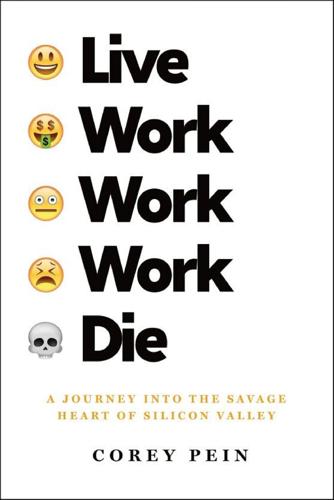
Live Work Work Work Die: A Journey Into the Savage Heart of Silicon Valley
by
Corey Pein
Published 23 Apr 2018
Lying awake in bed, arm stiff from holding my smartphone aloft, I sought solace in the sanguine stream of updates on Hacker News, a techie discussion forum run by a venture capital fund and startup “incubator” called Y Combinator. This outfit seemed vaguely prestigious, the commenters knowledgeable. The titles of the inspirational homilies on Hacker News reassured me that I was not alone: “Fail Fast, Fail Often, and Fail by Design,” “Failing Fast Means … Failing a Lot,” and, most succinctly, “Success Through Failure.” I took it all to heart. I reinterpreted my failure as a character-building experience. But something else was going on with this self-guided tutelage. I wasn’t just changing careers and jumping on the “learn to code” bandwagon.
…
Even with small armies of highly educated analysts at their disposal, Ghazi explained, most VC shops were not actually qualified to assess the technical merits of all the various startups looking for money in Silicon Valley. It took only one big hit—one ride on a unicorn’s back—to make an investor’s reputation. But with billions of dollars at stake, careers could be ruined as quickly as they were made. This contributed to the high-rolling “fail fast” mentality among VCs, which in turn kept them primed to make snap judgments based on stereotypes and superficial information, delivered via PowerPoint. It also forced them to rely heavily on ideas and models with which they were already familiar. “At VC shops, we looked at four hundred deals per year.
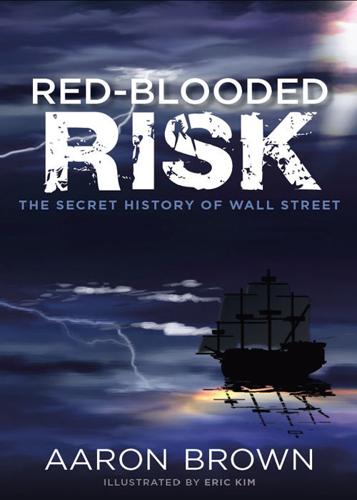
Red-Blooded Risk: The Secret History of Wall Street
by
Aaron Brown
and
Eric Kim
Published 10 Oct 2011
Those weeds choke off resources for valuable innovations. Instead of survival of the fittest, we have survival of the biggest and, because regulations are always intensely conservative, survival of the fittest for the nineteenth century. There should be a lot of financial firm failures. They should fail fast and often. The only safe system is one that allows failure. Managing Risk Having disposed of current events, we can finally get to the action. The title of the chapter is: What does a risk manager do? So far the answer has been more about what a risk manager measures, or discusses, or thinks about, or plans.
…
Do not repeat any of these on company property. If you bring this book into work, black them out or tear out the pages. Unspeakable Truth Number One: Risk Managers Should Make Sure Firms Fail Success requires innovation, and innovation implies frequent failure. Failure isn’t the problem. Slow and expensive failure is. Fail often, fail fast, and fail cheap is the formula for success. And cheap is not measured by initial outlay. You must plan for success to have much chance of both succeeding and exploiting the success to an adequate degree to justify the risk. That means you commit the resources and energy to do things right. But you pull the plug quickly on a failure; you don’t bleed money trying to prove you were right all along.
…
If there’s a trial afterward, the risk taker wants to keep pushing the idea until she can prove it failed due to external events that made it impossible; also, she wants to keep it going long enough that it seems like a worthwhile idea that had a real chance of success. Risk managers want people to fail fast instead, and that requires dispensing with the trial afterward. Unspeakable Truth Number Three: Risk Managers Create Risk It was game theory that proved adding artificial risk to a situation can improve outcomes. A related idea is Monte Carlo analysis, which taught that adding artificial randomness to deterministic problems can make them easier to solve.
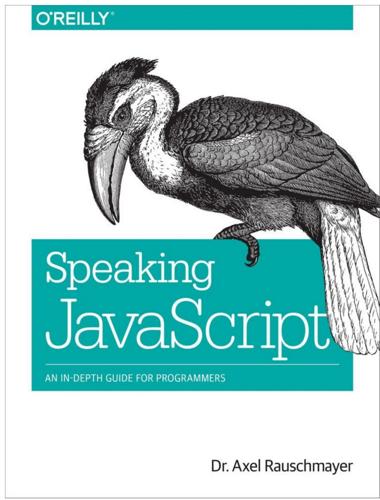
Speaking JavaScript: An In-Depth Guide for Programmers
by
Axel Rauschmayer
Published 25 Feb 2014
.); } Check for the existence of a property via in and hasOwnProperty (see Iteration and Detection of Properties) This is more self-explanatory and safer than comparing with undefined or checking for truthiness: // All properties: if (obj.foo) // no if (obj.foo !== undefined) // no if ('foo' in obj) ... // yes // Own properties: if (obj.hasOwnProperty('foo')) ... // risky for arbitrary objects if (Object.prototype.hasOwnProperty.call(obj, 'foo')) ... // safe Fail fast If you can, it’s best to fail fast and to not fail silently. JavaScript is only so forgiving (e.g., division by zero), because the first version of ECMAScript did not have exceptions. For example, don’t coerce values; throw an exception. However, you have to find ways to recover gracefully from failure when your code is in production.
…
IIFE (immediately invoked function expression), Introducing a New Scope via an IIFE statements versus, Statements Versus Expressions using ambiguous expressions as statements, Using ambiguous expressions as statements extensions of objects, preventing, Preventing Extensions F failing fast, Miscellaneous finally clause (try-finally), try-catch-finally, Examples Firebug, How Standardized Is the Console API Across Engines? Firefox OS, Historical JavaScript Milestones flags in regular expressions, Flags, Regular Expression Cheat Sheet problems with flag /g, Problems with the Flag /g floating-point numbers, Numbers representing integers as, Representing Integers as Floating-Point Numbers for each-in loop, for each-in for loop, Loops, for array iteration via, Sparse Arrays Versus Dense Arrays for-in loop, for-in, The for-in loop caution with for-in for objects, Best practice: be careful with for-in for objects enumerability of properties, effects of, The effects of enumerability not using to iterate over arrays, Best practice: don’t use for-in for arrays forEach() method (see Array.prototype.forEach() method) freezing objects, Freezing function declarations, Functions defining a function, Function Declarations hoisting, Function Declarations Are Hoisted, Hoisting versus function expressions, Which Is Better: A Function Declaration or a Function Expression?
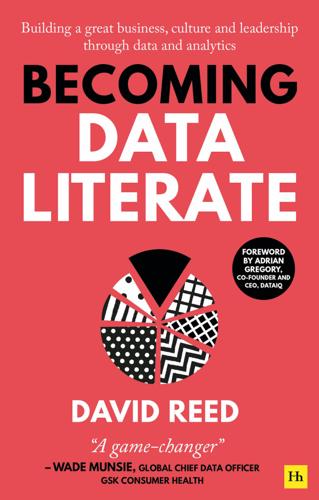
Becoming Data Literate: Building a great business, culture and leadership through data and analytics
by
David Reed
Published 31 Aug 2021
As board members increasingly possess a high level of data literacy and cognisance of what is possible, the distinction between the CDO and the C-suite will dissolve. A new vision will be necessary for what the CDO brings to the table. For business strategy – test-and-learn will become part of the working method across the enterprise, not just within data science and analytics. There will be no fear of failure, but rather a desire to fail fast in order to identify successful strategies. Ensuring engagement by the board with external innovators, especially those outside of the sector or domain, should be part of the leadership provided by the CDO. For value creation – if the data office has tied its actions to bottom-line impacts, the CDO will need to step up as a business leader, taking ownership and responsibility for value creation at the deepest level.
…
The origins of this point of view are clearly in manufacturing and manual labour where production lines have fixed processes and where any deviation leads to expensive errors and delays. In service industries, especially those employing knowledge workers (a term coined by Drucker in 1959 in his book, Landmarks of Tomorrow), it is hard to apply such management when there is no predetermined process to follow. Data often relies on a degree of test-and-learn and fail fast in order to reach the appropriate end point. Even then, it is likely that a data set or a model will be subject to constant iteration and optimisation. Sticking at it to achieve the best outcome and recognising the need for continuous improvement is about doing the right thing. A key distinction between traditional workers and knowledge workers stems from this – instead of being subordinates to a boss, they are associates.
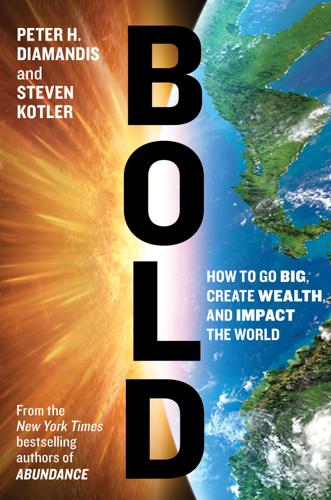
Bold: How to Go Big, Create Wealth and Impact the World
by
Peter H. Diamandis
and
Steven Kotler
Published 3 Feb 2015
PART TWO: BOLD MINDSET Chapter Four: Climbing Mount Bold 1 “Skunk works,” Worldwidewords.com, http://www.worldwidewords.org/qa/qa-sku1.htm. 2 Lockheed Martin, “Skunk Works Origin Story,” Lockheedmartin.com, http://www.lockheedmartin.com/us/aeronautics/skunkworks/origin.html. 3 Matthew E May, “The Rules of Successful Skunk Works Projects,” Fast Company, October 9, 2012, http://www.fastcompany.com/3001702/rules-successful-skunk-works-projects. 4 Unless otherwise noted, all Gary Latham and Edwin Locke quotes are taken from a series of AIs conducted in 2013. 5 Edwin Locke and Gary Latham, “New Directions in Goal-Setting Theory,” Current Directions in Psychological Science 15, no. 5 (2006): 265–68. 6 Lockheed Martin, “Kelly’s 14 Rules & Practices,” Lockheedmartin.com, http://www.lockheedmartin.com/us/aeronautics/skunkworks/14rules.html. 7 Jeff Bezos, “2012 re: Invent Day 2: Fireside Chat with Jeff Bezos & Werner Vogels,” November 29, 2012. See https://www.youtube.com/watch?v=O4MtQGRIIuA. 8 Dominic Basulto, “The new #Fail: Fail fast, fail early and fail often,” Washington Post, May 30, 2012, http://www.washingtonpost.com/blogs/innovations/post/the-new-fail-fail-fast-fail-early-and-fail-often/2012/05/30/gJQAKA891U_blog.html. 9 John Anderson, “Change on a Dime: Agile Design,” UX Magazine, July 19, 2011, http://uxmag.com/articles/change-on-a-dime-agile-design. 10 AI with Ismail, 2013. 11 For an amazing breakdown of these ideas, see Dan Pink, “RSA Animate—Drive: The surprising truth about what motivates us,” RSA, April 1, 2010, https://www.youtube.com/watch?
…
The entire third part of this book is dedicated to the principle that crowdsourcing can provide you with incredible ideas, insights, products, and services. 4. Think Big but Start Small. This is the basis for Singularity University’s 109 thinking. You can start a company on day one that affects a small group, but aim to positively impact a billion people within a decade. 5. Never Fail to Fail. The importance of rapid iteration: Fail frequently, fail fast, and fail forward. 6. Spark with Imagination, Fuel with Data. Agility—that is, nimbleness—is a key discriminator against the large and linear. And agility requires lots of access to new and often wild ideas and lots of good data to separate the worthwhile from the wooly. For certain, the most successful start-ups today are data driven.
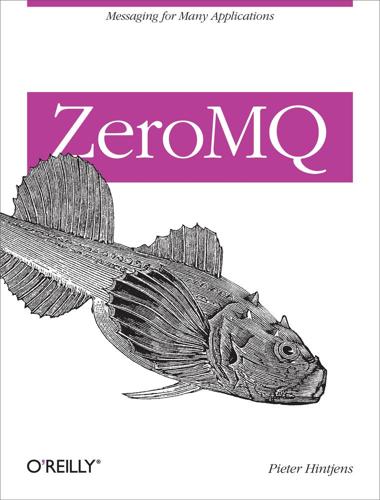
ZeroMQ
by
Pieter Hintjens
Published 12 Mar 2013
The ZMTP/2.0 protocol does announce each peer’s socket type, so this check is doable. The ZRE protocol has no fail-fast (assertion) mechanism; we need to read and parse a whole message before realizing that it’s invalid. Let’s address the second one. Socket pair validation wouldn’t solve this fully anyhow. Protocol Assertions As Wikipedia puts it, “Fail-fast systems are usually designed to stop normal operation rather than attempt to continue a possibly flawed process.” A protocol like HTTP has a fail-fast mechanism in that the first four bytes that a client sends to an HTTP server must be “HTTP”.
…
Pub-sub forwarder proxy It looks very similar to the earlier proxy example, but the key part is that the frontend and backend sockets are on two different networks. We can use this model, for example, to connect a multicast network (pgm transport) to a TCP publisher. Handling Errors and ETERM ØMQ’s error handling philosophy is a mix of fail fast and resilience. Processes, we believe, should be as vulnerable as possible to internal errors, and as robust as possible against external attacks and errors. To give an analogy, a living cell will self-destruct if it detects a single internal error, yet it will resist attack from the outside by all means possible.

Little Bets: How Breakthrough Ideas Emerge From Small Discoveries
by
Peter Sims
Published 18 Apr 2011
But the next day, she’d go through them with a colored pen, find a new lead paragraph and a better ending and rewrite it. “It always turned out fine, sometimes even funny and weird and helpful.” At the beginning of any new idea, the possibilities can seem infinite, and that wide-open landscape of opportunity can become a prison of anxiety and self-doubt. This is a key reason why failing fast with low-risk prototypes the way Chris Rock does is so helpful: If we haven’t invested much in developing an idea, emotionally or in terms of time or resources, then we are more likely to be able to focus on what we can learn from that effort than on what we’ve lost in making it. Prototyping is one of the most effective ways to both jump-start our thinking and to guide, inspire, and discipline an experimental approach.
…
Although they competed against substantially larger, better-resourced companies, such as 1-800-FREE-411, they were consistently first to identify new features and services such as driving directions and integrated web-phone promotional offers. Note that one of the great benefits of the agile approach is that it is also a good method for failing fast. As Vanier explains, if he can launch ten features in the same time it takes a competitor to launch one, he’ll have ten times the amount of experience to draw from in figuring out what has failed the test of customer acceptance and what has succeeded. Agile development is not without its limitations, such as when large teams must be coordinated, but well-run agile teams have regularly achieved higher productivity and quality than the waterfall method.
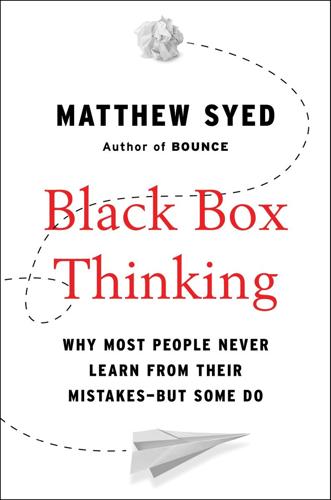
Black Box Thinking: Why Most People Never Learn From Their Mistakes--But Some Do
by
Matthew Syed
Published 3 Nov 2015
As the author Peter Sims puts it: “A study published in 2002 found that using [the] active user strategy to identify and develop ideas generated an average of $146 million after five years, more than eight times higher than the average project developed using traditional, in-house 3M idea-generation methods.”19 Many other “failure-based” notions are finding their way into business. Agile scrum development and the fail-fast approach are just two of these. Some are doubtless more effective than others. All would benefit from further testing (systems devoted to trial and error themselves benefit from trial and error). None should be used in the wrong context. But the key significance of this family of ideas, which have helped to develop many of the world’s most innovative products, is that they present a riposte to the historic presumption of top-down over bottom-up.
…
“There is still a great deal of political resistance to running trials, in the UK and beyond,” David Halpern, the chief executive of BIT, said, “but we are slowly making progress.” Another “failure based” technique, which has come into vogue in recent years, is the so-called pre-mortem. With this method a team is invited to consider why a plan has gone wrong before it has even been put into action. It is the ultimate “fail fast” technique. The idea is to encourage people to be open about their concerns, rather than hiding them out of fear of sounding negative. The pre-mortem is crucially different from considering what might go wrong. With a pre-mortem, the team is told, in effect, that “the patient is dead”: the project has failed; the objectives have not been met; the plans have bombed.
…
Daniel Kahneman, Thinking, Fast and Slow (New York: Penguin, 2012). 9. http://www.bbc.co.uk/news/business-27579790. 10. Peter Sims, Little Bets: How Breakthrough Ideas Emerge from Small Discoveries (New York: Random House Business, 2012). 11. Ibid. 12. Ryan Babineaux and John Krumboltz, Fail Fast, Fail Often: How Losing Can Help You Win (New York: Tarcher, 2014). 13. David Bayles and Ted Orland, Art and Fear: Observations on the Perils (and Rewards) of Artmaking (New York: Image Continuum Press, 2001). 14. https://www.youtube.com/watch?v=vY3OtMBCEKY. 15. Eric Ries, The Lean Startup: How Constant Innovation Creates Radically Successful Businesses (New York: Portfolio/Penguin, 2011). 16.
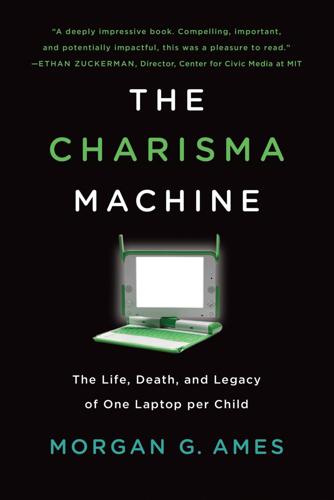
The Charisma Machine: The Life, Death, and Legacy of One Laptop Per Child
by
Morgan G. Ames
Published 19 Nov 2019
In Recapturing Anthropology: Working in the Present, edited by Richard G. Fox, 191–210. Santa Fe, NM: School of American Research Press, 1991. ———. Modernity at Large: Cultural Dimension of Globalization. Minneapolis: University of Minnesota Press, 1996. Asghar, Rob. “Why Silicon Valley’s ‘Fail Fast’ Mantra Is Just Hype.” Forbes, July 14, 2014. https://www.forbes.com/sites/robasghar/2014/07/14/why-silicon-valleys-fail-fast-mantra-is-just-hype/. Azoulay, Pierre, Benjamin F. Jones, J. Daniel Kim, and Javier Miranda. “Age and High-Growth Entrepreneurship.” NBER Working Paper No. w24489, April 2018. https://ssrn.com/abstract=3158929. Badham, John, dir. WarGames.
…
Papert, Mindstorms, viii; Papert, Children’s Machine, 21, 26–27, 196; Papert, “Computer Criticism”; Papert, “Critique of Technocentrism.” 21. See Dray and Menosky, “New World Order”; Camfield, “OLPC History”; Papert et al., Logo Philosophy and Implementation, ix–x, 2–21; Papert, Children’s Machine, 75–78. Warschauer, Laptops and Literacy. 22. See, e.g., Vota, “How to ... Use Failures.” 23. Asghar, “Silicon Valley’s ‘Fail Fast’ Mantra.” 24. Fail Festival, “Why.” 25. MacKenzie, Engine, Not a Camera. 26. Mazzarella, “Beautiful Balloon,” 799. 27. Mazzarella, “Beautiful Balloon,” 799. 28. Mazzarella, “Beautiful Balloon,” 784. 29. Dourish and Bell, Divining a Digital Future, 3–5; Mosco, Digital Sublime, 3–4, 13–14, 24, 28, 31, 34–37, 41–42, 68, 74–75, 85, 88, 94–97, 118, 125. 30.
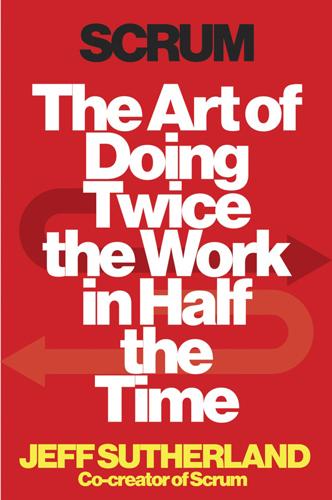
Scrum: The Art of Doing Twice the Work in Half the Time
by
Jeff Sutherland
and
Jj Sutherland
Published 29 Sep 2014
Every little while, stop doing what you’re doing, review what you’ve done, and see if it’s still what you should be doing and if you can do it better. Change or Die. Clinging to the old way of doing things, of command and control and rigid predictability, will bring only failure. In the meantime, the competition that is willing to change will leave you in the dust. Fail Fast So You Can Fix Early. Corporate culture often puts more weight on forms, procedures, and meetings than on visible value creation that can be inspected at short intervals by users. Work that does not produce real value is madness. Working product in short cycles allows early user feedback and you can immediately eliminate what is obviously wasteful effort.
…
Eisenstat, Stanley electronic ink Emotional Waste “Emperor’s New Clothes, The” (Andersen) “Employing ISR: SOF Best Practices,” Energy Maneuverability (EM) theory e-readers estimation: of effort of relative size, 6.1, 6.2, 6.3 stories and, 6.1, 6.2 by teams of work, 6.1, 6.2, 6.3, 6.4 Europe, luxury car manufacturing in Expectations, Unreasonable “Experimental Application of the Delphi Method to the Use of Experts, An” (Dalkey and Helmer) “Extraneous Factors in Judicial Decisions,” F-86 Sabre fighters, 8.1, 8.2 Facebook, 1.1, 1.2, 8.1, 9.1 Fail Fast Federal Bureau of Investigation (FBI), 1.1, 3.1, 8.1 Automated Case Support system of Sentinel system of, 1.1, 1.2, 1.3, 1.4, 8.1 Virtual Case File (VCF) system feedback, 8.1, app.1 Product Owner and, 8.1, 8.2, 8.3 Feynman, Richard Fibonacci sequence, 6.1, 6.2, 6.3, 6.4, 9.1 financial crisis, of 2008 financial risk, 8.1, 8.2 flat structure flow, 1.1, 5.1, 5.2 Foley, Christa, 7.1, 7.2 Forbes, Ford Motor Company, 2.1, 4.1 Forrester Research Fortune, 3.1, 6.1 Frederick II the Great, king of Prussia Fremont, Calif.
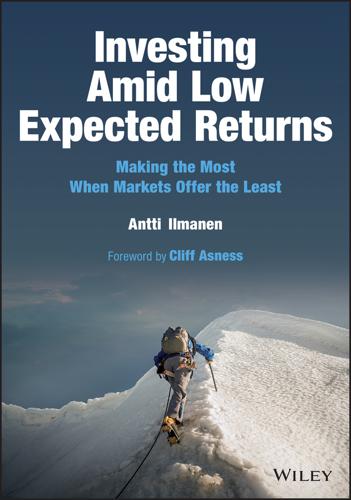
Investing Amid Low Expected Returns: Making the Most When Markets Offer the Least
by
Antti Ilmanen
Published 24 Feb 2022
Recall the conundrum of strong equities amid lockdowns and high unemployment in mid-2020, or how US equities fared well during the two world wars (perhaps because they were fought overseas). Some other existential threats – of climate change, bioterrorism, pandemics, nuclear war3 – before Covid-19 only had a limited impact on financial markets. One underrated aspect of risk, apart from the depth of losses, is the risk of failing fast versus failing slow.4 The risk of failing fast is more visible and thus often the focus of regulators, sometimes increasing the risk of failing slowly. For example, they may limit institutional risk taking in a low return world, thereby virtually ensuring that institutions will fail to reach their long-term goals (while maybe protecting them against even worse failures). 13.2.
…
Others include strategies that tend to incur severe but very infrequent losses, which may not be present in any evaluation period (“peso problem”), or those resorting to outright crime (Bernie Madoff's returns were famously smooth). For a given SR, the simplest way to reduce potential losses is to take less risk. In the extreme, cash investments give very smooth but low returns. This approach shifts risks from failing fast to failing slowly (by being too conservative and not earning enough to achieve long-term financial goals). We may be too patient with all these questionable approaches, as their shortcomings emerge only at a later date. It is more interesting to ask how investors can enhance patience for a given risk-adjusted return.
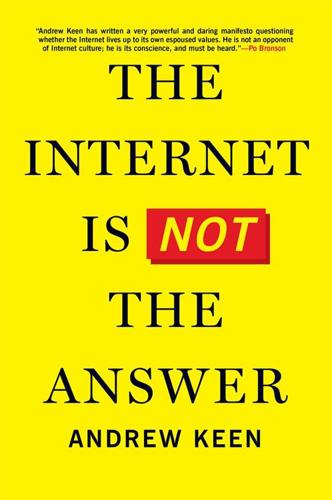
The Internet Is Not the Answer
by
Andrew Keen
Published 5 Jan 2015
The bigger their success, the more exaggerated their claim to being serial failures. “How I Failed,” O’Reilly thus titled a much-hyped 2013 keynote speech at one of his own successful events.4 But O’Reilly has some stiff competition in this failure Olympiad. Reid Hoffman, the billionaire founder of LinkedIn, advises entrepreneurs to “fail fast.”5 Paul Graham, a multimillionaire angel investor, calls his incubator of startup Internet ventures, which has hatched many successful startups, including Alexis Ohanian’s Reddit, “Failure Central,”6 while Dave McClure, another wealthy angel, not to be outfailed by his successful rival, talks up his equally successful 500 Startups incubator as “Fail Factory.”7 Indeed, the cult of failure has become such a mania in the Valley that there is now even an entire event, a San Francisco conference called FailCon, dedicated to its veneration.
…
For data on Rochester’s very high 2012 murder rate, see Karyn Bower, John Klofas, and Janelle Duda, “Homicide in Rochester, NY 2012: Comparison of Rates for a Selection of United States and International Cities,” Center of Public Initiatives, January 25, 2013. 3 Rory Carroll, “Silicon Valley’s Culture of Failure . . . and the ‘Walking Dead’ It Leaves Behind,” Guardian, June 28, 2014. 4 “How I Failed,” Cultivate Conference, New York City, October 14, 2013, cultivatecon.com/cultivate2013/public/schedule/detail/31551. 5 “‘Fail Fast’ Advises LinkedIn Founder and Tech Investor Reid Hoffman,” BBC, January 11, 2011. 6 “Failure: The F-Word Silicon Valley Loves and Hates,” NPR.org, June 19, 2012, npr.org/2012/06/19/155005546/failure-the-f-word-silicon-valley-loves-and-hates. 7 Eric Markowitz, “Why Silicon Valley Loves Failure,” Inc., August 16, 2012, inc.com/eric-markowitz/brilliant-failures/why-silicon-valley-loves-failures.html/1. 8 MIT Technology Review, September/October 2013, technologyreview.com/magazine/2013/09.

Frugal Innovation: How to Do Better With Less
by
Jaideep Prabhu Navi Radjou
Published 15 Feb 2015
Use just-in-time design Rather than over-engineering products with just-in-case features, companies should adopt just-in-time design. This starts with a good-enough product and incrementally adds new features based on customer feedback in a just-in-time fashion. Approaches such as agile development methodology and lean start-up, which teach companies how to fail fast, fail early and fail cheaply, can enable such just-in-time design in large firms with big R&D teams.11 Beware supply chain constraints Delays and cost escalation in innovation projects often occur because R&D teams design products without considering supply chain capabilities. As a result, new products are often designed using components that are hard to find, too costly, or too complex to manufacture and maintain.
…
Given TGV Lab’s limited resources and time constraints, Ternois says, it has no choice but to practise frugal innovation techniques, using rapid prototyping to design good-enough solutions, rather than over-engineered offerings, and working throughout with internal experts, customers and a variety of technology partners (including tech start-ups). As a result, TGV Lab is able to innovate faster, better and more cost-effectively than SNCF ever could. The lab is also allowed to carry out riskier projects, guided by the Silicon Valley innovation philosophy: fail early, fail fast and fail often. TGV Lab does the failing, so SNCF does not have to. Yet the Lab’s success rate is relatively high. Of its 30 pilot projects launched since 2008, over half have been successfully implemented and scaled up by SNCF. Its smartphone-based productivity tools are used by 10,000 TGV ticket inspectors.

Beautiful Architecture: Leading Thinkers Reveal the Hidden Beauty in Software Design
by
Diomidis Spinellis
and
Georgios Gousios
Published 30 Dec 2008
By the time the request exits the pipeline, it holds only a result object with a success indicator and an optional collection of problems. Each step in the pipeline has its own opportunity to report problems by adding an error message to the result. If any step reports errors, the pipeline aborts and the engine reports the problem back to PCS. Fail fast Every system has failure modes; the only question is whether you design them in or just let them happen. We took care to design in “safe” failures, particularly in the production process. There was no way we wanted our software to be responsible for stopping the production line. There’s another aspect, too.
…
It seems like a trivial statement, but it is very important to render the production scale images in the same way that the on-screen image was rendered. We worked hard to ensure that exactly the same rendering code would be used in production as in the studio. We also made sure that the rendering engine would use the same fonts and backgrounds in production. In our render engine, we adopted a philosophy of “Fail Fast, Fail Loudly.” As soon as the render engine pulls a job from PCS, it checks through all the instructions, validating that all the resources the job requires are actually available. If the job includes text, the render engine loads the font right away. If the job includes some background images or an alpha mask, the render engine loads the underlying images right away.
…
Facebook Platform, Introduction, Summation GNU Emacs, GNU Emacs: Creeping Featurism Is a Strength, Firefox Guardian operating system, Guardian: A Fault-Tolerant Operating System Environment, Further Reading Jikes RVM, The Strength of Metacircular Virtual Machines: Jikes RVM, References JPC, JPC: An x86 PC Emulator in Pure Java, It Feels Better the Second Time Around KDE, Introduction, A Crazy Idea Lifetouch, Making Memories, References Messy Metropolis project, The Messy Metropolis, A Postcard from the Metropolis Persistent URL system, Applied Resource-Oriented Architecture, Applied Resource-Oriented Architecture Project Darkstar, Context, Simplifying the Programmer’s Job exceptions, Java Performance Tips, The Perils of Protected Mode, Handling exceptions, Exception Model handling, The Perils of Protected Mode, Handling exceptions Jikes RVM, Exception Model performance, Java Performance Tips execution model, Basic Execution Model Jikes RVM, Basic Execution Model EXPAND, Networking: EXPAND and FOX Guardian operating system, Networking: EXPAND and FOX expressions, State Intervention referential transparency, State Intervention extendibility, Overview, Extendibility Criteria, Assessing the Functional Approach, Extendibility: Adding Types adding types, Extendibility: Adding Types criteria, Extendibility Criteria defined, Overview and reusability, Assessing the Functional Approach external libraries, Java Performance Tips, Bytecode manipulation performance, Java Performance Tips, Bytecode manipulation eXtreme Programming (XP), Design Town in Design Town project, Design Town F Facebook JavaScript (FBJS), FBJS, FBJS Facebook Markup Language, Acknowledgments (see FBML) Facebook Platform, Introduction, Summation Facebook Query Language (FQL), Creating a Social Data Query Service, FQL, Architecture of FQL facets, Architecture Facets, Scale out factored control flow graph, Factored control flow graph Jikes RVM, Factored control flow graph factoring, Microcoding: Less Is More or More Is Less IA-32 architecture with JPC, Microcoding: Less Is More or More Is Less factors, So What? in architecture, So What? failure, Diagnosis diagnosing, Diagnosis failure modes, Fail fast Fallingwater house, Frank Lloyd Wright, Brick and Mortar Architecture fault-tolerance, Task Portability in distributed systems, Task Portability FBJS (Facebook JavaScript), FBJS, FBJS FBML (Facebook Markup Language), Creating a Social Web Portal: FBML, Putting it all together, FBML Architecture architecture of, FBML Architecture social web portals, Creating a Social Web Portal: FBML, Putting it all together file structure, Modules and Launcher Lifetouch, Modules and Launcher file systems, File System, File Access Security Guardian operating system, File System, File Access Security file transfer protocols, NIO image transfer Lifetouch, NIO image transfer files, File Access Security, Emacs in Use access security in Tandem computers, File Access Security GNU Emacs, Emacs in Use filesystems, The First Release and Beyond optimization in KDE, The First Release and Beyond financial contracts, The Functional Examples handling with object technology, The Functional Examples Firefox, Firefox “first-order citizens”, The Functional Advantage operations, The Functional Advantage fork bombs, Xenoservers performance isolation, Xenoservers forms, Forms Lifetouch, Forms FQL (Facebook Query Language), Creating a Social Data Query Service, FQL, Architecture of FQL frames, Emacs in Use GNU Emacs, Emacs in Use Free Software community, History and Structure of the KDE Project quality of software, History and Structure of the KDE Project functional languages, Software Architecture: Object-Oriented Versus Functional versus object oriented, Software Architecture: Object-Oriented Versus Functional functional programming, Software Architecture: Object-Oriented Versus Functional modular design, Software Architecture: Object-Oriented Versus Functional functional solutions, Assessing the Modularity of Functional Solutions, State Intervention modularity, Assessing the Modularity of Functional Solutions, State Intervention functionality, Creating a Software Architecture, Lack of cohesion, Locating functionality locating in Design Town project, Locating functionality location of in Messy Metropolis project, Lack of cohesion in relation to architecture, Creating a Software Architecture “functionality package” tags, “Functionality package” tags functions, The Modularization Policy and types, The Modularization Policy G games, Introduction scaling, Introduction “Gang of Four” book, Design Patterns: Elements of Reusable Object-Oriented Software, Rereading the Classics garbage collection, Fighting A Losing Battle, Class Loading and Unloading, but on a Big Scale, Garbage Collection Is Slower Than Explicit Memory Management, Garbage Collection Jikes RVM, Garbage Collection JPC, Fighting A Losing Battle JVM, Class Loading and Unloading, but on a Big Scale versus explicit memory management in runtime environments, Garbage Collection Is Slower Than Explicit Memory Management genericity, Using Software Contracts and Genericity Globally Unique IDentifiers (GUIDs), Immutable Data and Ubiquitous GUIDs Lifetouch, Immutable Data and Ubiquitous GUIDs GNU Emacs, GNU Emacs: Creeping Featurism Is a Strength, Firefox grant tables, The Changing Shape of Xen Xen, The Changing Shape of Xen graphical user interfaces, Acknowledgments (see GUIs) grid computing, Xenoservers, Xenoservers compared to xenoservers, Xenoservers virtualization influence on, Xenoservers growth accommodation, Principles, Properties, and Structures defined, Principles, Properties, and Structures Guardian operating system, Guardian: A Fault-Tolerant Operating System Environment, Further Reading GUIDs (Globally Unique IDentifiers), Immutable Data and Ubiquitous GUIDs Lifetouch, Immutable Data and Ubiquitous GUIDs GUIs (graphical user interfaces), Kiosk-Style GUI, A Crazy Idea, Extendibility Criteria extendibility criteria, Extendibility Criteria Lifetouch, Kiosk-Style GUI ThreadWeaver, A Crazy Idea H Hagia Sophia, The Role of the Software Architect handling, Handling exceptions exceptions, Handling exceptions handshake, A Simple Web Service Authentication Handshake user-controlled authentication in Facebook, A Simple Web Service Authentication Handshake hardware, The Game World, The Macro Structure, Interchangeable Workstations, The Challenges of Virtualization, Hardware, Diagnosis, Mechanical Layout, Hardware Limitations, Flexible Computing Anywhere detecting failure of, Diagnosis servers, The Game World, The Macro Structure, Interchangeable Workstations, Flexible Computing Anywhere Tandem computers, Hardware, Mechanical Layout, Hardware Limitations virtualization, The Challenges of Virtualization hardware virtual machines, Changing Hardware, Changing Xen Xen project, Changing Hardware, Changing Xen hiding, The Information Hiding Structures, The First Goal distribution and concurrency in Project Darkstar, The First Goal information, The Information Hiding Structures hierarchy, What Constitutes a Software Architecture?
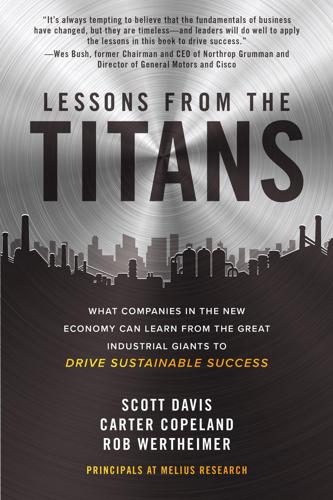
Lessons from the Titans: What Companies in the New Economy Can Learn from the Great Industrial Giants to Drive Sustainable Success
by
Scott Davis
,
Carter Copeland
and
Rob Wertheimer
Published 13 Jul 2020
Instead, they developed an organization with a market capitalization of $125 billion, one that supports 114,000 jobs, easily funds its shrinking liabilities, and has the reputation of a true technology leader. From an operations perspective, Cote was an amazing tactician who balanced the long and short term perhaps better than any other leader in American corporate history. He “failed fast” before it became a familiar business concept, while driving deep change in the organization. All of that was possible because he gave employees strong direction and a set of practices and tools. The Honeywell Operating System greatly reduced costs in manufacturing, procurement, and logistics. It boosted margins and freed working capital to fund strategic investments and the turnaround that put Honeywell back on the offensive.
…
Cote had only one thing going for him: the board had no alternative CEO in the wings, and activists believed the company too broken to touch, so he had time to right the ship. We’re now used to CEOs operating as crisis managers to carry out a turnaround, but Cote did it before it was popular. He moved quickly and decisively, with a fail-fast approach that pushed people to perform immediately. He recruited outside managers and supplemented with younger talent that had been overlooked. He overhauled incentives to focus people on stabilizing existing operations and generating cash flow. He also managed to hire back some talent that had left in the GE debacle, key people in technology and R&D.

The Big Nine: How the Tech Titans and Their Thinking Machines Could Warp Humanity
by
Amy Webb
Published 5 Mar 2019
Whose values, ideals, and worldviews are being taught? The short answer is not yours—and also not mine. Artificial intelligence has the mind of its tribe, prioritizing its creators’ values, ideals, and worldviews. But it is also starting to develop a mind of its own. The Tribe Leaders AI’s tribe has a familiar, catchy rallying cry: fail fast and fail often. In fact, a version of it—“move fast and break things”—was Facebook’s official company motto until recently. The idea of making mistakes and accepting failures is in stark contrast to America’s enormous corporations, which avoid risk and move at a snail’s pace, and it’s a laudable aim.
…
See also Future and AI, catastrophic scenario of; Future and AI, optimistic scenario of; Future and AI, pragmatic scenario of; Nanny AGIs (NAGIs) Artificial intelligence (AI): anthropomorphized, 2; bad behavior, 113–122; definition, 13; developing guiding principles, 127–128; drivers of in China, 7; drivers of in United States, 7; ecosystem, 17; fail fast and fail often motto, 53; funding by U.S. government in optimistic scenario of future, 156; key practices, 31; loss of human control over advanced systems, 129; optimizing for humans, 126–131; pipeline problem, 64; term coined, 29; treating as public good, 136, 138; U.S. need for cohesive strategy, 244–245; warning signs about future crises; 136–141; women in field of, 64–65.
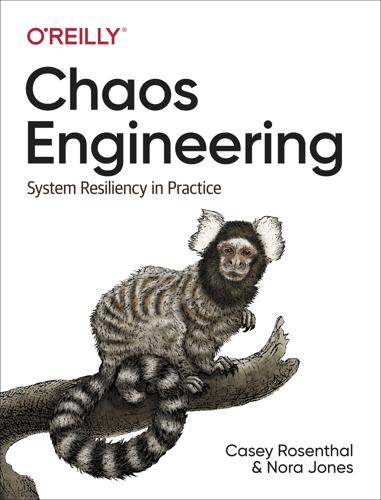
Chaos Engineering: System Resiliency in Practice
by
Casey Rosenthal
and
Nora Jones
Published 27 Apr 2020
Chaos Engineering assumes controlled experiments that can be reverted, with things brought back in good state. If possible, plan and test your recovery plan before executing an experiment. Finally, you should consider failures outside of your design realm, for which you accepted total loss. Systems are not expected to cope with such failure. In the best case you expect to fail fast and notify the proper audience. But, you might also be expected to recover. Coming back online after power loss, recovering connections after fiber repair, re-instantiating storage replicas—all of those events should happen properly. Required automated procedures must work, personnel should be trained as needed, and so on.
…
Sydney Dekker3 There is no single root cause for failure, much like there is no single root cause for success. The root cause analysis (RCA) approach results in unnecessary and unhelpful assignment of blame, isolation of the engineers involved, and ultimately a culture of fear throughout the organization. Mistakes will always happen. Rather than failing fast and encouraging experimentation, the traditional RCA approach to postmortem analysis diminishes the ability to derive a deeper understanding of what events and actions might have contributed to the outcome of the adverse event. At the end of the day, RCA is not reducing the number or severity of security defects in our products.
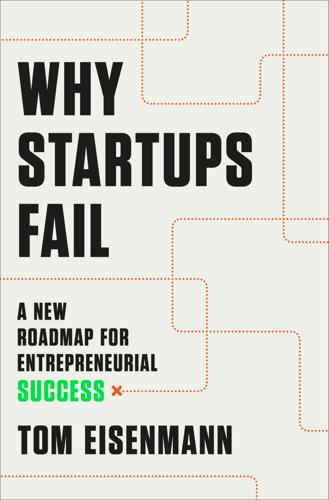
Why Startups Fail: A New Roadmap for Entrepreneurial Success
by
Tom Eisenmann
Published 29 Mar 2021
A false start occurs when a startup rushes to launch its first product before conducting enough customer research—only to find that the opportunities they’ve identified are rife with problems. By giving short shrift to early and accurate customer feedback and by neglecting to test their assumptions with MVPs, they simply run out of time to fix all the flaws, thus turning Lean Startup’s “Fail Fast” mantra into a self-fulfilling prophecy. Time is an early-stage startup’s most precious resource and a false start wastes a feedback cycle. Afterward, the team should still try to pivot toward a more attractive opportunity. But each pivot consumes time and, with it, scarce cash; moreover, it may take more than one pivot to strike gold.
…
Lean Startup gurus advise founders to “launch early and often,” putting a real product into the hands of real customers to secure their feedback as fast as possible. Triangulate’s team did that, over and over. With each product iteration, they responded to customer feedback quickly and pivoted in a nimble manner. In doing so, they heeded another Lean Startup mantra: Fail Fast. But Triangulate’s team, like many entrepreneurs, neglected yet another Lean Startup precept: complete “customer discovery”—a thorough round of interviews with prospective customers—before designing and developing a minimum viable product. In Nagaraj’s postmortem analysis of Triangulate’s failure, he acknowledged skipping this crucial early step: “In retrospect, I should have spent a few months talking to as many customers as possible before we started to code.
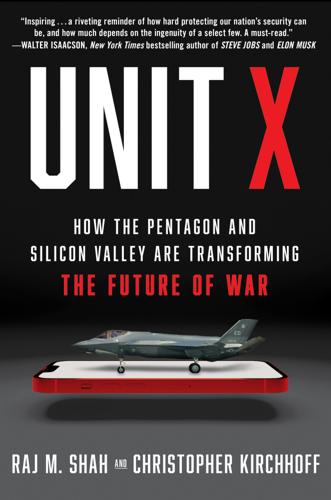
Unit X: How the Pentagon and Silicon Valley Are Transforming the Future of War
by
Raj M. Shah
and
Christopher Kirchhoff
Published 8 Jul 2024
Back in Washington, he gave Carter an unvarnished assessment of DIUx: “It’s fucked,” he said, delivering the kind of tough talk a Valley venture capitalist tells a failing startup. “You need to get rid of the people in charge and find new leadership. Give them real resources and real authority. And don’t do this quietly. You need to make a big deal of it. Show everyone in the Valley that you’re starting over.” In Silicon Valley, Park told Carter, it is better to fail fast and reboot than to try to hide failure behind incremental fixes. In the Secretary of Defense’s mind, the stillborn office would be known as DIUx 1.0—the initial release. Carter would personally oversee an upgrade to DIUx 2.0. The new version would have many new features, including the two of us at its helm, with Raj as managing director and Chris as founding partner.
…
See drones Raps, Susan, 42–43 Rasmussen, Anders Fogh, 175 Raytheon, 5, 123, 215 Reagan, Ronald, 77 Resilience, 131, 184, 190 Rice, Condoleezza, 134, 178 Richardson, John, 224 Rieschel, Gary, 169 Rosenbach, Eric, 16, 26, 220 Ross, Wilbur, 129 ROTC (Reserve Officers’ Training Corps), 191–92, 194 Rothzeid, David, 190 Russia (former Soviet Union) Black Sea Fleet, 114 electronic warfare system (Tobol), 211 Iranian drones and, 201, 209, 240 jammers used by, 211 military budget, 217 new weapons, 225 nuclear weapons and, 79 SAM missiles, 84 Ukraine War and, 98, 114, 190, 199–201, 210–11, 218 as threat to U.S., 225 Saildrone, x, 110–13, 131 Sanger, David E., 92 SAR (synthetic aperture radar) technology, ix, 74, 80–81 Banazadeh and, 82–83 “Douser” system and, 81 funding for, 87–88 KN-08 surveillance problem and, 76 microsatellites and Capella, 81–83, 91–93, 199, 215, 232 traditional designs, 83 Sasse, Ben, 157 satellites Albedo high resolution, 190 Capella’s microsatellites, 81–83, 86–88, 91–98, 199, 215, 232 commercial companies, 83 DIUx and SAR sensor North Korea project, 74–86 for Google Earth, 190 “Guo Wang” satellites, 225 HawkEye 360, 181, 189, 202, 232 KH-1 Corona, 77 optical-based, limitations, 83 Planet Labs, 202 reconnaissance, 77, 79, 80, 83 Starlink, 201, 204, 224–25 Scale AI, 169, 239 Donovan platform, 239 Schadlow, Nadia, 139–40, 141 Schmidt, Eric, xi, 46, 47, 118, 130, 134, 220 advice for Shah, 184, 186 Biden administration and, 169–70 CAOC misuse of IT and, 54 career history, 48–49, 186 heads the DIB, 46, 47, 48–49, 155 Munich meeting with China’s top AI diplomat, Fu Ying, 162–68 NSCAI and, 143–45, 147–48, 155–57, 175 Pelosi and, 162 SCSP and, 206 Trump and, 159 Ukraine War and, 210, 212 Schmidt Futures, 130, 134, 143 Schumer, Chuck, 158, 161, 174 SCIF (sensitive compartmented information facility), 73 Scott, Denise, 43 SCSP (Special Competitive Studies Project), 206 Seidman, Ricki, 170–71 Selva, Paul, 75, 78, 88, 93–95 SenseTime, 137 Serafini, John, 181, 189 Shah, Raj M. angel investing and, 131, 180–84, 202 Ash Carter Exchange meeting, 228 background, 14, 187 Banazadeh and SAR satellites, 85–86 Brown and, 172 “The Business of the UAS Industry,” 235 Capella and, 73–75, 86–88, 92–98 Carter and, 219 on Commission on Planning, Programming, Budgeting, and Execution Reform, 245–46 cybersecurity startups, 2, 14, 15, 21, 184, 190, 197 DIU 3.0 and, 226–27 DIUx, personal investment in, 129 DIUx all-hands meeting, 19, 21–23 DIUx mission, 2, 21–22 DIUx recruits him, with Kirchhoff, 2, 11, 15–17 DIUx team members and, 19–21 as “dual fluency” reservist, 21 as F-16 pilot, 1, 44, 64, 65, 237 fight to restore DIUx’s budget, 28–36 founding CEO, Resilience, 131 as Hoover Institution fellow, 179 leaves DIUx, 130 Mattis and, 108 meeting with McCain, 64–66 meeting with Thornberry, 71–72 NATO’s Innovation Fund and, 233, 245 need for national strategy on AI, 143 North Korea surveillance project, 76–77, 78 NSCAI and, 144 number of trips to D.C., 28, 71 policy changes to improve U.S. military readiness, 192–96 Project Maven and, 117–18, 120–21 Schmidt and, 155, 184, 186 Shield Capital and, 173, 177, 179, 184–91 Stanford class, 179 Stephens and Luckey meet, 125–26 Taiwan and, 218 tanker refueling project, 54–55 Tech Track 2 and, 178–80, 230 Trump meeting with, 128–29 Ukraine and, 215, 232–34 venture capitalists and, 103 visit to CAOC at Al Udeid, 45–46, 49 visit to Hanscom Air Force Base, 53 Warsaw conference on UAS scaling and, 234–36 Wert tries to shut down DIU, 59–60 Shanahan, John “Jack,” xi, 117, 121 JAIC and, 121, 158, 212 NSCAI and, 158–59 Ukraine War and, 212–13 Shanahan, Patrick, 153 Shield AI, 100–101, 131, 191 Nova drones, 101 Shield Capital, ix, 173, 177, 179, 181, 184–91, 197, 239 Shyu, Heidi, 222–23 Silicon Valley, 97 acceptable attire in, 17–18 advantages of, 76 Carter’s overtures to, 7–9 China’s venture capital in, 149 deal-making in, 36–37, 38 defense investing in, 138, 143, 177–91 defense-oriented startups, 101, 103, 127, 131, 191, 215, 237 DIUx contracts and raising venture capital for startups, 9, 85, 96, 97, 98, 99, 101, 202 DIUx located in, 8–9, 12 DIUx’s mission to link startups with the Pentagon, 2, 9–10, 89 DoD relations with, 5–6, 40, 97, 122–28, 178, 237 (see also Project Maven; specific products) “fail fast” philosophy and, 13 global technology market and, 39 “lean” methodology, 54, 84 moral objections to weapons of war, 6, 120–21, 127–28, 183, 188 need for H-1B visas for critical engineers, 195 NSA spying and, 6, 7 Replicator Initiative and, 240 startups created by immigrants, 195–96 startups surpassing big defense contractors, 116 startups with transformational technology, 5 startups with warfare innovations, 3 Ukraine War and, 190, 202–3, 206, 207 way of, better to beg forgiveness, 66, 243 “Working backward from the customer,” 46, 85 world’s ten largest tech companies based in the U.S., 177 See also venture capital; specific startups Skydio, 108, 202 Smith, Megan, 140 Snowden, Edward, 6, 7, 10 Somewear Labs, 202, 205 Sorensen, Reuben, xi, 73–74, 76, 78, 87, 92 Banazadeh and SAR satellites, 86 Capella funding and, 95 Datahub project and, 80, 81 J-39 SWAT team and, 74, 80 Orbital Effects founded, 97 SOUTHCOM, Saildrone project, 111 South Korea, 89–92 Brooks as U.S.
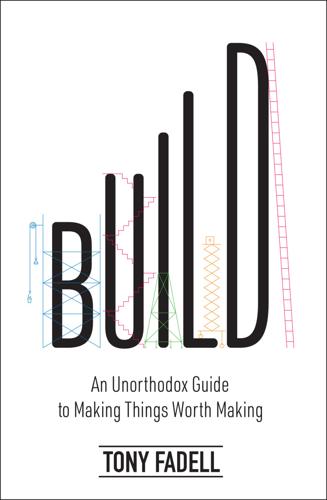
Build: An Unorthodox Guide to Making Things Worth Making
by
Tony Fadell
Published 2 May 2022
Take at least another few months—possibly up to a year—to look at it from every angle and consult with people you trust, create some business plans and presentations, and prepare as well as you possibly can. You do not want to start a company only to discover that your seemingly great idea is a shiny veneer over a hollow tooth, ready to crack at the slightest pressure. A lot of startups have a “fail fast” mentality in Silicon Valley. It’s a trendy term that means instead of planning carefully for what you want to make, you build first and figure it out later. You iterate until you “find” success. This can manifest in two ways—either you knock out a product quickly then iterate even faster to get to something people want, or you quit your job, cut loose from your commitments, and sit around thinking up startup ideas until you find a business that works.
…
See also product management classes in, 51–52 considerations of, 43–44, 47 crisis and, 220–21, 224 cultivating natural successors, 55 decisions and, 61–63 discipline of, 44 establishing effective style of, 52–53 human resource topics at meetings, 240, 241 individual contributors as managers, 238, 248, 251–53 managers becoming directors, 238, 253 meetings of, 253 micromanagement, 44–46, 49, 52, 66, 211, 218, 221, 236, 277 motivation and, 53–54 performance reviews, 51 self-managing, 242 size of organization and, 46, 244 skills required for, 43, 44, 46–49 of teams, 41, 43–44, 46, 49–56, 242, 244, 245, 247, 249–50, 331 training for, 252–53 management consulting, 17–18 manufacturing design team and, 264, 269 disruption of, 115 product development and, 90, 92, 93, 96, 122, 130, 166, 168, 209 product management and, 288 role of, 24, 27, 277 sales team and, 293 marketing CEO expectations and, 324–25 culture of, 258 customer experience and, 270–71, 272, 273 legal team’s checks on, 276, 306 messaging activation matrix, 274, 275, 276, 280, 284, 285 messaging architecture, 102, 271, 272, 273, 280 of Nest Labs, 264–65 product development and, 279 product management and, 270, 273, 279, 281, 286, 287, 288–89, 290, 291 prototypes of, 100, 105–6 rigorous and analytical process of, 270–71 role of, 24, 27, 182 sales and, 295 startups and, 227 storytelling and, 270, 271, 273–74, 278–79, 278, 285, 286, 290 teams and, 270–80 Memegen app, 255 mentors/coaches board of directors and, 340, 341 breakpoints and, 256–57, 260 of early adulthood, 9 individual contributors as, 47 relationships and, 373–76 for startups, 180, 183, 184, 185–86, 194, 218, 223 teams and, 230, 240, 256–57 value of, xi, xii, xiii, 374–76 Microsoft, 3, 91, 123–24, 282, 310, 321 Microsoft OS, 31, 37, 77, 88, 202 Moore, Geoffrey, Crossing the Chasm, 151, 152–54, 156 Mossberg, Walt, 134 motivation of assholes, 68, 70, 75 management and, 53–54 Motorola, 148 Motorola Mobility, 352 Motorola ROKR iTunes phone, 329 MP3 players, 40–41, 87, 120, 122, 134, 332 Musicmatch Jukebox, 134 music streaming, 122 Musk, Elon, 21, 321 Nadella, Satya, 123–24, 321 Nest Cam, 306–8, 307, 313 Nest Labs board of directors of, 338, 339–40 culture of, 257, 325, 346, 349, 351, 352, 363, 375 customer support and, 323 development of, xviii–xix, 55, 165, 177, 185, 199–200, 226, 230 Google’s acquisition of, xix, 304, 310–16, 338, 345–52, 354–55, 359–61, 371 Google’s reabsorption of, 319–20 Google’s selling of, 317–19, 367 growth of, 225, 230, 236 intellectual property and, 306 investors in, 164, 165–66, 177, 178 marketing of, 264–65 perks at, 359–62 research for, 230 sales culture of, 297 Three Crowns hiring method at, 233 Nest Learning Thermostat app for phone, 98–99, 164, 167 customer installation, 99, 103–6, 113, 178, 280 defining feature of, 120 development of, xiv, xix, 98–100, 164, 166–68, 174–77, 279 disruption of, 124 generations of, 105–6, 159, 160–61, 167–68, 179, 230 interactive components of, 309–10 launching of, 117, 167 lawsuit against, 117, 303–4 marketing of, 274, 275, 276, 277–79, 278 packaging prototype for, 100, 101, 102, 264–65, 274 problems solved by, 166, 279 product manager for, 230, 289 Rush Hour Rewards, 113–14 screwdriver for, 104–6, 104 storytelling for, 112, 113–14, 234, 264–65, 274, 276, 278–79, 278 success of, 310–11 user testing of, 103–4 Why We Made It page, 278–79, 278 Nest Protect development of, xiv, xix, 161, 168, 309 generations of, 313 launching of, 169 Wave to Hush, 219–20, 222–23 Nest Secure, 289–90, 313 Newton, 139 Ng, Stan, 92 Niel, Xavier, 199–200 Nokia, 117, 122–23, 327 Not Invented Here Syndrome, 327 Novotney, DJ, 92 Oenning, Anton, 264–65 Oh-hyun, Kwon, 54 Omidyar, Pierre, 188 operations team competition and, 123 product management and, 291 role of, 24 sales and, 293, 295, 298 startups and, 182 Page, Larry acquisition of Nest and, 314–15, 320, 347–48, 351–52, 354, 355, 361 Alphabet and, 314 selling of Nest, 317–18 Palmer, Andy, 322 Palm PDAs, 15, 130, 332 patents, 305, 306 perks, criteria for, 356–63 personal growth adulthood, 5–13 criteria for getting a job, 14–19 heroes and, 20–25, 27 individual contributor’s perspective, 26–27, 28, 29, 30, 31–33 Philips competition with iPod, 121 culture of, 36–37, 209, 258 Tony Fadell as CTO at, xvii, 18, 36–37, 45–46, 58, 61, 77, 81, 88, 89, 96, 125, 129–30, 209, 374 as partner and investor in General Magic, 36, 37 target customer of, 58–61, 130 team schedules for, 144–45 Philips Nino, launching of, xvii, 38, 39–40, 39, 90 Philips Strategy and Ventures Group, Tony Fadell’s launching of, xvii, 40 Philips Velo customer panels for, 58–60 launching of, xvii, 37–40, 38, 90 project schedule for, 145 Pichai, Sundar, 53, 347–48, 355 Pinterest, 160 Pocket Crystal, 1, 2, 12 Porat, Marc, 1–2, 1, 27, 37 Power Mac G4 Cube, 329 PR crisis and, 219 customer experience and, 105 product management and, 137, 285, 288, 291 role of, 16, 27, 48 venture capital and, 195 product management legal team and, 287, 288, 306 marketing team and, 270, 273, 279, 281, 286, 287, 288–89, 290, 291 PR and, 137, 285, 288, 291 product manager and, 230, 270, 273, 281–91 project manager and, 281–82 role of, 24, 48, 227, 230, 279, 281, 283, 284, 286, 289 as set of skills, 284 startups and, 227 as voice of customer, 281, 282, 284, 286, 289–90 product managers (PdMs), 230, 270, 273, 281–91 product/market fit, 150, 151, 155, 156 products as brand, 270 building of, xii–xiii, 87–93, 373–76 CEO expectations of, 325 characteristics of, 14 competition for market share and mind share, 111 cost of goods sold (COGS), 106, 155 evolution versus disruption versus execution, 115–25 external project heartbeat rhythms of, 145–46, 149 internal project heartbeat rhythms of, 138–49, 139 making the intangible tangible, 95–106, 113, 323 messaging architecture of, 102 packaging prototypes, 100, 101, 102, 264–65 press releases for, 136–37 problems solved by, 14, 15–17, 19, 36, 61, 96, 109, 110, 262, 263, 273, 279, 290 product specific groups, 250–51 profitability of, 150–51, 152–54, 155, 156, 158, 160–61 prototypes of customer experience, 95, 96, 97, 98–100, 102–6, 119 stages of profitability, 150–61 storytelling and, 107–14, 266, 270, 271, 273, 278, 286, 288 user testing of, 103–5 version 1 products, 60, 115, 126–27, 133–34, 136, 138, 140, 146–47, 149, 150, 151, 152–54, 155, 157–58, 159, 179 version 2 products, 115–16, 126, 127–28, 134, 135–36, 149, 150, 151, 152–54, 155, 156, 157, 159, 179 version 3 products, 150–51, 152–54, 155–57, 159 program managers (PgMs), 282 project managers (PjMs), 281–82 Quality Computers, xv quitting career growth and, 41, 76–78 human resources and, 76, 81, 85, 86 narrative of, 83–84, 235 as negotiating tactic, 82–83 networking and, 78–80, 81, 84 personal problems and, 82 storytelling and, 83–84, 235 as strategy for dealing with assholes, 71, 73, 84–85 transition of, 76–81, 235 RealNetworks, Tony Fadell’s digital music player with, xvii, 41, 77, 80, 87, 332 reinvention, in Silicon Valley, xii risks of early adulthood, 6, 8, 9–13 political assholes and, 65–66 Robbin, Jeff, 303 Rogers, Matt at Apple, 237 brown-bag lunches with the CEO, 237 hiring process and, 233 on iPod engineering team, 55, 165 Nest Labs acquired by Google, 316 Nest Labs development, xviii–xix, 55, 165, 177, 226, 230 Ross, Ivy, 64 Rubin, Andy, 327–28 sales culture of, 292–99 product management and, 287, 288 relationships and, 294, 295–99 role of, 27, 182, 284, 285, 292, 295 startups and, 227 vested commission model of, 292–93, 298–99 Samsung, 89–90, 189, 345 Sander, Brian, 24 Sander, Wendell, 24 seed crystals, 180, 185, 232, 339–40 Silicon Valley culture of, xi–xii, 4, 10–11, 16, 37, 359 early adopters of, 157 “fail fast” mentality in, 174 investment in, 90, 192 smartphones customer experience of, 109, 128, 130 products based on use of, 16–17 Smith, Cheryl, 85 social media, 73. See also Facebook; Twitter Soloway, Elliot, 2 Sony, 117, 121, 209 Sony Magic Link launch of, 12–13, 12, 31, 139–40 MagicBus for, 24 target customer of, 15, 35–36, 58 Square, 250 startups angel investors, 192 board of directors and, 183, 184, 218–19, 223, 335, 338–39 building blocks of, 181–82 cofounders and, 180, 183, 184, 186 compensation and, 184–85 crisis and, 206, 207, 208, 209, 218–24 design challenges, 264 employees and, 183–84 equity packages and, 184–85 evolution of, 236 failure rate of, 199 founding team of, 180, 183, 184–85, 197–98, 366 implementation plan, 172 investors and, 169, 181, 184, 189–200 key teams and competencies of, 227 mentors for, 180, 183, 184, 185–86, 194, 218, 223 perks and, 356, 359 prioritizing and, 206–7, 210 readiness for, 180–88 seed crystals, 180, 185 spotting ideas, 169, 171–79, 180, 182 storytelling and, 184, 196–97 stress of, 169, 183, 200 target customer of, 201–5 virtual reality and, 15 vision and, 184 work/life balance and, 206–17 Stebbings, Harry, 22–23 storytelling analogies for, 112–14 decisions and, 63–64 design and, 264–65, 266 empathy and, 111–12 ideas and, 172, 174, 177–78 marketing and, 270, 271, 273–74, 278–79, 278, 285, 286, 290 products and, 107–14, 266, 270, 271, 273, 278, 286, 288 quitting and, 83–84, 235 startups and, 184, 196–97 strategies to deal with assholes and, 74–75 vision and, 63–64, 107, 112 Stripe, 250 Surface products, 124 Swatch, 332 Tamaseb, Ali, Super Founder, 181 Tannenbaum, Harry, 55 Target, 160 teams assistant for, 216 birthday celebrations and, 242–43 breakpoints, 242–60, 283 brown-bag lunches with the CEO, 237 building of, 225–27, 229, 239, 240–41 CEO expectations and, 323–25 crisis and, 218–22, 224, 259 culture of, 229, 234, 236–38, 255, 257–60 decisions and, 57, 61 design thinking and, 261–69 diversity of perspectives on, 231–32 firing people and, 229, 238–40 founding team for business, 180, 183, 184–85, 197–98, 366 hiring process, 229–41 human resource topics at meetings, 240, 241 individual contributor’s perspective, 32–33 integration of new employees, 236–37 internal customers, 233, 325 interview process, 229, 232–36 key teams and competencies, 227 leadership of, 37–41, 45, 46, 247 management of, 41, 43–44, 46, 49–56, 242, 244, 245, 247, 249–50, 331 marketing teams, 270–80 meetings of, 50–51, 240, 241, 253–55 mentoring within, 230, 240, 256–57 multigenerational teams, 229, 230–31 1:1s with, 43, 50–51, 55, 238, 252, 259, 342 organizational design and, 250–51, 258 positive micromanagement and, 236–37 predictability for, 149 product managers and, 230, 270, 273, 281–91 recruiters and, 234, 255–56 rhythms of, 138, 139, 143–46 seed crystals and, 232 size of, 46, 141–43, 242, 243–49, 244, 245, 246, 260, 283 team leads, 47–48, 249 Three Crowns method of hiring, 233 training for, 229, 230, 258 trust of, 45, 48, 49, 51, 128, 233–34 version one product team, 128 version two product team, 128 work process of, 49–50 TeleScript, 15 term sheets, 194 Tesla, 119, 123, 157 Thread, 310 TikTok, 369 Tim Ferris Show podcast, 51n TiVo, 40, 88 Tolstoy, Leo, 336 trust of assholes, 65, 67, 68, 69 in companies, 41, 77, 80 of decisions, 57, 59, 61, 62, 64 of heroes, 25, 27 investors and, 190 of leadership, 62, 64, 330 marketing and, 276 in mentors, xii sales and, 294 of teams, 45, 48, 49, 51, 128, 233–34 Twilio, 250 Twitter, 21, 22, 73, 160, 205, 297 Uber, 16, 156 USB devices, 10, 24 venture capital (VC) firms, 90, 156, 164, 189–99, 200 Verily, 314 virtual reality (VR), startups failing at, 15 virus of doubt, 109, 278 vision of CEOs, 334, 339 for companies, 14, 15, 19, 248, 254 decisions and, 57, 126, 135 disruption and, 119 for ideas, 178 for leadership, 18 for product development, xvii, 1–2, 16, 41, 60, 132, 133, 134, 135 startups and, 184 storytelling and, 63–64, 107, 112 for version one products, 126, 136, 137, 142 for version two products, 127–28, 134 Walmart, 160 Waze, 352 West, Kanye, 311 WhatsApp, 156 Wolf of Wall Street, The (film), 296 work/life balance adjustments in, 11 crisis and, 208, 209, 221, 223–24 eating habits, 215 engineering your schedule, 206, 208, 212, 214–15, 216 exercise and, 215 hiring an assistant, 215–17 prioritizing and, 206–7, 210, 211, 212 scheduling and, 214 sleeping, 213, 221 taking breaks, 212, 214, 217 taking notes and, 210–12 types of, 206 vacations and, 207–8, 212–13, 214 Yahoo, 18, 358–59 Yiming, Zhang, 369 YouTube, 21, 156, 352 Sustainability Information This book is as green as we could make it.

Hooked: How to Build Habit-Forming Products
by
Nir Eyal
Published 26 Dec 2013
Ryan Tate, “Twitter Founder Reveals Secret Formula for Getting Rich Online,” Wired (accessed Nov. 12, 2013), http://www.wired.com/business/2013/09/ev-williams-xoxo. 9. Erika Hall, “How the ‘Failure’ Culture of Startups Is Killing Innovation,” Wired (accessed Nov. 12, 2013), http://www.wired.com/opinion/2013/09/why-do-research-when-you-can-fail-fast-pivot-and-act-out-other-popular-startup-cliches. 10. “The Power of User Narratives: Jack Dorsey (Square),” video, Entrepreneurial Thought Leaders Lecture (Stanford University, 2011), http://ecorner.stanford.edu/authorMaterialInfo.html?mid=2644. 11. Eric Ries, “What Is Customer Development?

Rocket Dreams: Musk, Bezos and the Trillion-Dollar Space Race
by
Christian Davenport
Published 6 Sep 2025
“Looking under the hood, I didn’t have a lot of faith in the mission succeeding. But it was a known risk, and we were okay with the idea that maybe it wouldn’t succeed.” This was purely a test flight, a chance to see if Frankenrocket could fly. If it didn’t, SpaceX would pick up the pieces and try again. Fail fast and learn—that was the SpaceX way. It had taken the company four tries to get its first rocket, the Falcon 1, to orbit in 2008. Later, in 2015 and ’16, the two Falcon 9s exploded. And it had lost several others returning from space as they attempted to land on a ship at sea. Musk called the mishaps RUDs—Rapid Unscheduled Disassemblies—and had put together a video of some of the most spectacular explosions, an anti-highlight reel of fire and smoke set to the John Philip Sousa march “The Liberty Bell” that had been the theme of one of his favorite TV shows, Monty Python’s Flying Circus.
…
At the same time, SpaceX’s army in South Texas was continuing to develop Starship, pushing it through an intense test campaign that encapsulated the force SpaceX had become: explosions and fiery failures mixed with seemingly impossible triumphs, all while Musk continued to drive at warp speed. SpaceX liked to talk about its iterative process—how it tested, failed fast, fixed problems, and tried again in a crawl-walk-run approach. So when Starship failed in spectacular fashion on April 20, 2023—the first flight with the spacecraft stacked on top of the Super Heavy booster—SpaceX cheered it as a successful failure. Three engines shut off at liftoff, and a couple more failed during the ascent.

Start Small, Stay Small: A Developer's Guide to Launching a Startup
by
Rob Walling
Published 15 Jan 2010
Before launch you may be able to get by using the waterfall method, but post-launch it will be a disaster. This goes for your development, support, and marketing efforts. As an entrepreneur, your #1 advantage is reaction time, and the waterfall approach reacts too slowly. You can’t specify everything, but you do need a plan to get you to your next release. Realization #5: You Need to Fail Fast and Recover If you haven’t already, you will soon need to accept you are going to fail a lot. You will make bad decisions, waste time, waste money, run ineffective ads, miss deadlines, and release buggy code. Each time this happens, you have to accept that you failed and move on. The faster you fail and learn from your mistakes, the faster you will improve.
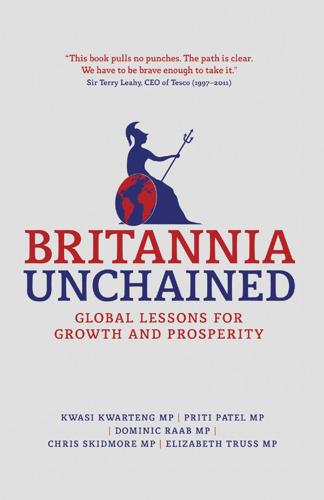
Britannia Unchained: Global Lessons for Growth and Prosperity
by
Kwasi Kwarteng
,
Priti Patel
,
Dominic Raab
,
Chris Skidmore
and
Elizabeth Truss
Published 12 Sep 2012
There is an annual conference in San Francisco – Failcon – which is devoted to learning the lessons of trying and failing, specifically in the tech industry. At this conference, entrepreneurs both budding and successful meet to discuss their experience of failure and in particular the way in which failing ultimately led them to succeed. Failing fast is the best way to learn how to ‘pivot’ to tomorrow’s success. Intuit, a company that specialises in accounting software, even goes so far as to hold ‘failure parties’.32 Lex Deak, a British entrepreneur who sold his first business at the age of 25, says: In speaking with tech colleagues in the States one gets a different response to new venture discussions.
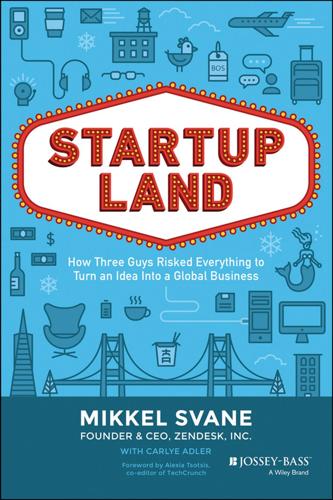
Startupland: How Three Guys Risked Everything to Turn an Idea Into a Global Business
by
Mikkel Svane
and
Carlye Adler
Published 13 Nov 2014
I had just turned thirty, and for almost four years this was the only thing that I had done. I was not depressed about losing my livelihood; I was depressed about losing the only thing I had. In Silicon Valley there’s a lot of talk about failure—there’s almost a celebration of failure. People recite mantras about “failing fast,” and successful people are always ready to tell you 15 Page 15 Svane c01.tex V3 - 10/24/2014 8:14 P.M. S TA R TU P L A N D what they learned from their failures, claiming they wouldn’t be where they are today without their previous spectacular mess-ups. To me, having experienced the disappointment that comes with failure, all this cheer is a little odd.

Digital Transformation at Scale: Why the Strategy Is Delivery
by
Andrew Greenway,Ben Terrett,Mike Bracken,Tom Loosemore
Published 18 Jun 2018
Agile, with a capital A, has become a project management philosophy, with all the artefacts, true believers and factions that come with it. Many of the biggest, loudest red-in-the-face arguments in digital government took place over the one true meaning of agile. It really doesn’t matter. What matters is teams focused on user needs, delivering iteratively in small, incremental improvements, failing fast, constantly planning for the future, and thinking about how to improve how the team itself works together. Agile working imposes regular working rhythms on a team, designed to keep pace and momentum high: short stand-ups at the start of each day, week- or fortnight-long ‘sprints’ setting defined priorities and goals, regular retrospectives to reflect on how well the team is working together and allow a chance for people to let off steam.
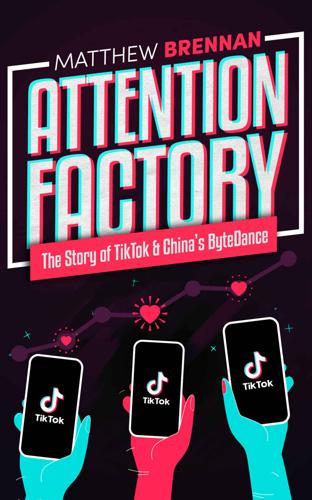
Attention Factory: The Story of TikTok and China's ByteDance
by
Matthew Brennan
Published 9 Oct 2020
Yet Musical.ly was drawing from China’s standard playbook, where such low-tech tactics were commonplace and labeled under the term “operations.” 145 It was a solid base, but they had failed so far to reach a tipping point that would allow them to scale. The founders were hesitant over whether to keep the business running, given the difficulty of securing funds, and their team was stripped down to a skeleton crew of just seven people. “Sometimes slow growth is worse than failing fast,” reflected Alex. Dubsmash “Lip-synching goes viral!” the smartly dressed news reporter exclaimed in serious-sounding tones while turning to face the studio camera. “That’s right, Jane, new app Dubsmash is taking the world by storm!” interjected her newsroom co-host. “The app has been downloaded more than 10 million times since it launched in October, now that’s impressive !”
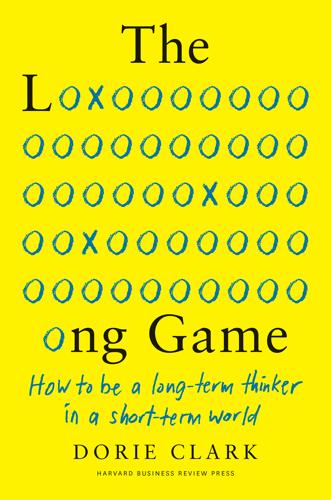
Long Game: How Long-Term Thinker Shorthb
by
Dorie Clark
Published 14 Oct 2021
Finally, in section three, “Keeping the Faith,” we’ll turn to what is often the hardest part about playing the long game: moving forward despite challenges or setbacks. In chapter 8, we’ll discuss strategic patience, the key to persevering when you’ve hit a plateau (or even, at times, when it feels like you’re slipping backward). Chapter 9 takes on failure, which usually feels awful and humiliating, Silicon Valley’s “fail fast” ideology notwithstanding. The secret is understanding the crucial difference between failure and experimentation—because if you’re learning, you’re not actually failing. Finally, in chapter 10, we’ll talk about the final step: reaping the rewards of your hard work. Ironically, that’s not always easy for successful people.
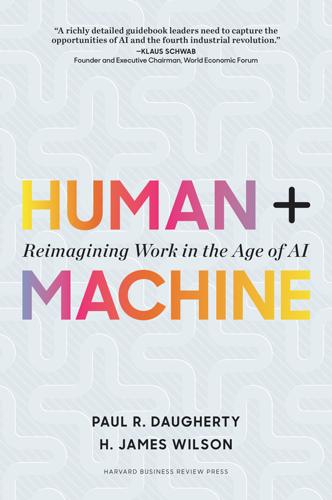
Human + Machine: Reimagining Work in the Age of AI
by
Paul R. Daugherty
and
H. James Wilson
Published 15 Jan 2018
And that transformation, according to Alexander, has led to fundamental changes at the company: “It requires a different talent base, and it requires a different mindset and an entirely different operating model.”22 The organizational changes to help move Capital One into this new era of AI have also been significant. As just one example, the company now deploys technology teams that embrace some of the principles of agile software development, in which the goal is to fail fast in order to succeed quickly. The management philosophy of “test and learn” is a core principle in Capital One’s culture. In late 2014, the company established the “Garage,” an innovation center on its Plano, Texas, campus. (The name “Garage” refers to the humble origins of many startups in Silicon Valley.)
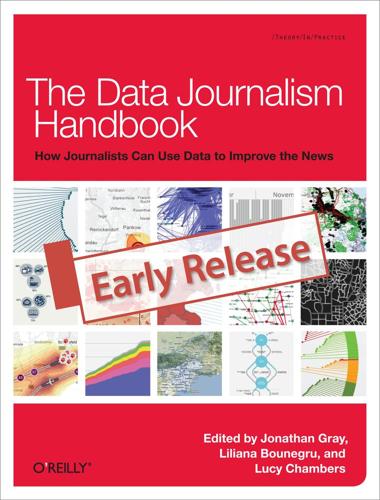
The Data Journalism Handbook
by
Jonathan Gray
,
Lucy Chambers
and
Liliana Bounegru
Published 9 May 2012
We frequently program in pairs; two developers at one keyboard are often more productive than two developers at two keyboards. Most projects don’t take more than a week to produce, but on longer projects we work in week-long iterations, and show our work to stakeholders (reporters and editors usually) every week. “Fail fast” is the mantra. If you’re doing it wrong, you need to know as soon as possible, especially when you’re coding on a deadline! There’s a tremendous upside to hacking iteratively, on a deadline: we’re always updating our toolkit. Every week we crank out an app or two, then, unlike normal software shops, we can put it to the back of our mind and move on to the next project.

Think Like a Freak
by
Steven D. Levitt
and
Stephen J. Dubner
Published 11 May 2014
If an idea survives that cut, it may make its way to Deane’s lab, a fifty-thousand-square-foot menagerie of saws, scopes, lasers, lathes, and jacked-up computers. It employs or hosts more than one hundred people. By the time an invention makes it to the lab, Deane says, there are two forces at work. “One force really wants to find a winner. The other one doesn’t want you to spend a ton of money or time on an idea that won’t be successful. The key is failing fast and failing cheap. That’s a mantra that comes out of Silicon Valley. I prefer the statement ‘failing well,’ or ‘failing smart.’ ” Deane, an upbeat man with a big shaved head, has a background in civil engineering and fluid mechanics. The hardest part of running the lab, he says, “is training people to understand that risk is part of their job, and if they fail well, they will be given the license to fail again.

The Money Tree: A Story About Finding the Fortune in Your Own Backyard
by
Chris Guillebeau
Published 6 Apr 2020
However, I’d encourage you to adopt a new motto: refer responsibly. We want new users, but it doesn’t help when all of them turn off the data-sharing options. We can’t get paid without that! Going forward, we’re going to restrict the $50 credit for use in the BuzzBucks™ online store, NOT in conversion to money like I first said. Fail fast, right? We have to keep the lights on over here! Kevin Quan Founder & CEO & COO * * * — From: Kevin Quan To: Social Media Team I heard that you guys are taking a lot of flak from people online. Remember the first rule of the internet: never read the comments section . . . but now that I think about it, I guess that’s your job.
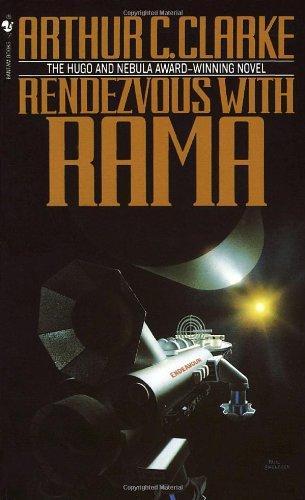
Rendezvous With Rama
by
Arthur C. Clarke
Published 27 Jun 1973
'Do you expect an orbit change already? We're still a long way from perihelion. 'I don't think Rama works by our textbooks. Nearly at Beta. We'll rest there for five minutes.’ Five minutes was utterly inadequate, yet it seemed an age. For there was now no doubt that the light was failing, and failing fast. Though they were all equipped with flashlights, the thought of darkness here was now intolerable; they had grown so psychologically accustomed to the endless day that it was hard to remember the conditions under which they had first explored this world. They felt an overwhelming urge to escape - to get out into the light of the Sun, a kilometre away on the other side of these cylindrical walls.

Bulletproof Problem Solving
by
Charles Conn
and
Robert McLean
Published 6 Mar 2019
Consistent with having one‐day answers and iterating in the seven steps the aim is to agree in detail on the staircase steps for the next 12–18 months, take stock, and then plan the next 12–18 months as new information on the market and the capability trajectory come to hand. The end goal or its timing is then altered to reflect the market and competitive realities. Agile development, failing fast, and sprints are the hallmarks of this approach to strategic problem solving. The Ripper Group shark‐spotting algorithm was discussed in Chapter 6. Ripper is an Australia‐based company started by Kevin Weldon, who was president of International Surf Life Saving, and Paul Scully‐Power, the first Australian to journey into space.

The Soul of Wealth
by
Daniel Crosby
Published 19 Sep 2024
What separated the winners from the losers was learning from mistakes, figuring out what worked and what didn’t, and adjusting from there. The ‘failure’ group generally came up empty when it came to identifying lessons, whereas the successful group made effective tweaks and took action. The upshot: It’s not about mindlessly repeating the same actions, but rather failing fast in a smart way, adapting, then improving. Edison could vouch for that. So, what do we know about failure? It is inevitable, and winning ideas almost always begin as duds. We also know that nothing about defeat is noble in and of itself, but rather it’s only as useful as our approach to it and our commitment to learning from it.

The Jobs to Be Done Playbook: Align Your Markets, Organization, and Strategy Around Customer Needs
by
Jim Kalbach
Published 6 Apr 2020
Integrating various jobs—acquiring, managing, and listening to music—all in a single platform provided incredible market advantage. These days, streaming music services get that job done even better, but the job is the same. 4. Making the job the unit of analysis makes innovation more predictable. In a time when businesses are encouraged to “fail fast” and “break things,” JTBD offers a more structured way to find solutions that resonate with customers in advance. Although there is no guarantee, understanding individuals’ objectives and needs provides more targeted insight from the beginning. Product success isn’t just left to luck or experimentation.
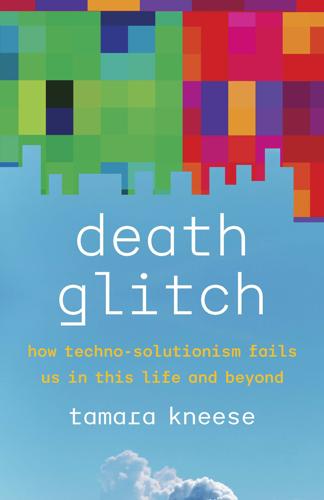
Death Glitch: How Techno-Solutionism Fails Us in This Life and Beyond
by
Tamara Kneese
Published 14 Aug 2023
Silicon Valley tech companies may talk about the future, but their bottom line is tied to short-term returns on a quarterly basis. The dot-com boom era of the 1990s, and its eventual, spectacular bust, arose from a culture that rewarded risky endeavors.69 Silicon Valley is also open to failure, often encouraging it as a badge of honor in a system that privileges hubris and risk-taking more than dependability. Fail fast, fail often; move fast and break things: these are the mantras of the tech world.70 In the context of long-term digital preservation and postmortem legacies, this makes for a strange backdrop. Silicon Valley is on an ongoing quest for techno-solutions to death, both on a physiological level and in terms of the problems associated with digital inheritance.

Testing Extreme Programming
by
Lisa Crispin
and
Tip House
Published 15 Apr 2003
Let them see how the tool contributes to the team's success. Experimenting with Tools XP's short iterations and frequent releases give you the opportunity to experiment with different solutions for one or more iterations, evaluate the results, and try something new. Just as projects can "fail fast" with XP, so can tools. A team for which Lisa was the tester used the short and frequent releases in XP as an opportunity to try different tools for acceptance-test automation. Here's Lisa's story: When I joined the team, they'd never automated any acceptance tests for the Web applications they were developing.
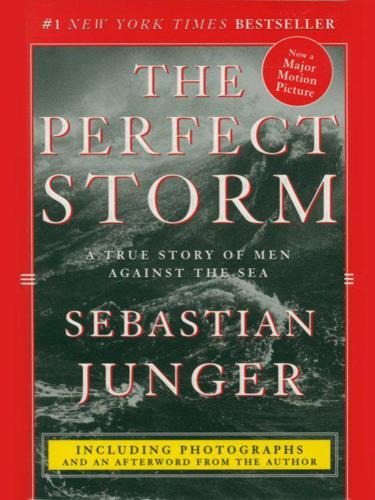
The Perfect Storm: A True Story of Men Against the Sea
by
Sebastian Junger
Published 30 Sep 1999
If Smith made it through the storm, though, Hyde's personal guess is that he could survive another four days. Eventually, he'll die of dehydration. The sea is much calmer now, but the search has been going full-bore for seventy-two hours without turning up anything; chances are almost nonexistent that Smith is alive. On the morning of November 2nd—the storm now over Prince Edward Island and failing fast—the cutter Tamaroa makes port at Shinnecock Inlet, Long Island, and Ruvola, Buschor, and Mioli are taken off by motor launch. Rick Smith's wife, Marianne, is at Suffolk Airbase for the event, and several people express concern over her watching the airmen reunited with their families. What do they think, that I want those women to lose their husbands, too?

The Buddha and the Badass: The Secret Spiritual Art of Succeeding at Work
by
Vishen Lakhiani
Published 14 Sep 2020
When this happens, you will also create change. Embrace this. So how fast can YOU test and tweak ideas? Are you making decisions at 80 percent accuracy and learning fast or are you foolishly waiting for 95 percent accuracy and delaying your ability to deploy, test, and learn? #3. Fail Fast. Fail Often. Learn from It. Salim Ismail, the head of Singularity University, came to Malaysia to meet the government. He told me he advised the prime minister to launch a massive nationwide conference and call it something like FailureCon. In it, he said, the prime minister should give an award to the entrepreneur with the biggest failure under his belt.
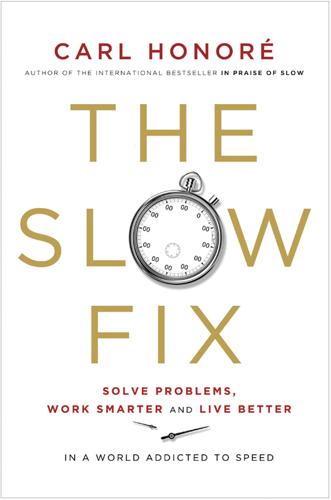
The Slow Fix: Solve Problems, Work Smarter, and Live Better in a World Addicted to Speed
by
Carl Honore
Published 29 Jan 2013
But the road to expertise is always paved with years of trial and error. You learn from mistakes in training so that you do not later make them on the job. Smart businesses are certainly fluent in trial and error. From software to pharmacology to banking, the mantra of the best problem-solvers is “Fail early and fail fast.” Venture capitalists expect many of the companies they invest in to crash and burn. When developing a new gadget, Apple makes multiple prototypes for every feature, which then compete in a marathon of survival-of-the-fittest tests. The last prototype standing is the one that makes it into your iPhone or iPad.

Monolith to Microservices: Evolutionary Patterns to Transform Your Monolith
by
Sam Newman
Published 14 Nov 2019
Isolating services more from each other can help, perhaps including the introduction of asynchronous communication to avoid temporal coupling (a topic we touched on in Chapter 1). Using sensible time-outs can avoid resource contention with slow downstream services, and in conjunction with patterns like circuit breakers, you can start failing fast to avoid problems with back pressure. Running multiple copies of services can help with instances dying, as can a platform that can implement desired state management (which can ensure that services get restarted if they crash). To restate a point made in Chapter 2, resiliency is more than just implementing a few patterns.

Tools of Titans: The Tactics, Routines, and Habits of Billionaires, Icons, and World-Class Performers
by
Timothy Ferriss
Published 6 Dec 2016
But what both schools have in common is an orientation toward, I would say, original thinking in really being able to view things as they are as opposed to what everybody says about them, or the way they’re believed to be.” Short and Sweet I followed Marc on Twitter well before we met in person. Here are a few of my favorite tweets of his, many related to the above points: “My goal is not to fail fast. My goal is to succeed over the long run. They are not the same thing.” “To do original work: It’s not necessary to know something nobody else knows. It is necessary to believe something few other people believe.” “Andy Grove had the answer: For every metric, there should be another ‘paired’ metric that addresses adverse consequences of the first metric.”
…
The Old Man and the Sea, Leaves of Grass (first edition). ✸ If you could have a gigantic billboard anywhere, what would it say? “Breathe.” ✸ Do you have any quotes that you live you life by or think of often? “I know nothing.” ✸ What is the worst advice you see or hear given in your trade? “Fail fast!” ✸ What is something you believe that other people think is crazy? We’re born with everything we’ll ever need. ✸ Three people or sources you’ve learned from—or followed closely—in the last year? Wim Hof, Rick Rubin, Rick Owens ✸ What are your favorite episodes of The Tim Ferriss Show?
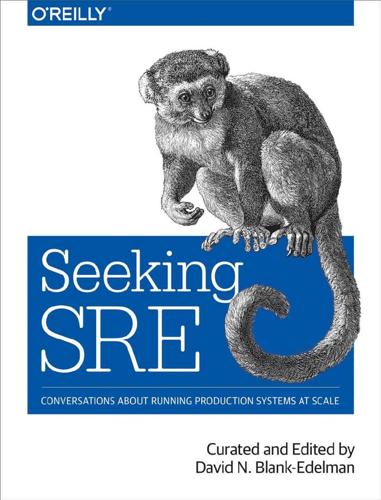
Seeking SRE: Conversations About Running Production Systems at Scale
by
David N. Blank-Edelman
Published 16 Sep 2018
Eventually, this became a standard component in the onboarding process for engineers at Spotify, and a shorter, nontechnical version is now taught to all Spotifiers around the globe. Key Learnings Our key takeaways from this period of high growth were: Deployment windows work to protect ops, so leverage them wisely. Alerting and on-call need to have processes and expectations in place. Fail fast and learn through failure. Teaching skills and responsibilities is an essential part of operations. Hold talks on teaching how the entire system works. It’s tempting to have a single team handle production and IT in an early stage, but to be a productive SRE team, you should split it. A “goalie” role or another formal way to handle interruptive work helps the team focus on proactive work.
…
David: What do you mean by stages of development? Pedro: I see teams and services go through three phases in this order: Bootstrap phase Do anything and everything that you need to get the service up and running. That might mean a lot of firefighting and manual intervention to fix things. It might mean quick, iterative deployments that fail fast. It might mean just allowing a trickle of traffic at first. You build up these operational muscles and figure out what the failure modes are and how it affects other systems. Scale phase Once you’re out of the bootstrap phase, you start to move into the scale phase. This might include deploying the service into multiple regions, getting the service used by millions or billions of people depending on the type of service.

A More Beautiful Question: The Power of Inquiry to Spark Breakthrough Ideas
by
Warren Berger
Published 4 Mar 2014
When I asked Sebastian Thrun why the What if you could not fail? question resonated with him, he responded, “People mainly fail because they fear failure.” A central tenet of Thrun’s approach to bringing about radical change, whether that involves reinventing cars or college courses, is “the willingness to fail fast and celebrate failures.” Thrun added, “Innovators have to be fearless.” That was the message Dugan conveyed in her TED speech featuring the could-not-fail question. “If you really ask yourself this question,” she told the audience, “you can’t help but feel uncomfortable,” because it becomes clear that fear of failure “keeps us from attempting great things . . . and life gets dull.
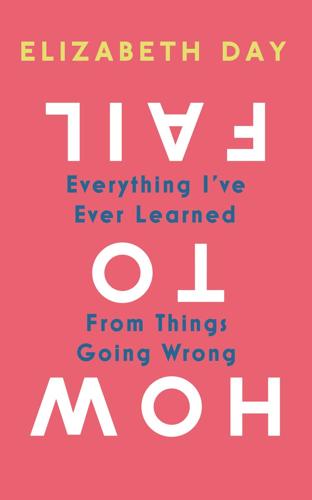
How to Fail: Everything I’ve Ever Learned From Things Going Wrong
by
Elizabeth Day
Published 3 Apr 2019
he said. ‘And you can either handle it or you can’t. If you can’t, get out. But I don’t look at all the books that I tried to write before A Million Little Pieces that I threw away that were no good, as failures, I just look at them as part of the process.’ To this day, Frey said, his mantra is: ‘Fail fast. Fail often.’ It’s a mantra that holds great weight in the (male-dominated) entrepreneurial world too, where risks have to be taken in order to think differently. In this sphere, failure is not only accepted but sometimes even celebrated. There are certain venture capitalists who won’t even think of parting with their cash unless an entrepreneur has failed with a start-up company at least once – the idea being that the entrepreneur will have learned from that failure, will have got all the mistakes out of their system, and will therefore present a sounder investment.
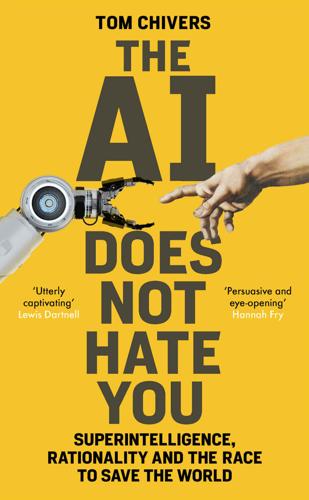
The Rationalist's Guide to the Galaxy: Superintelligent AI and the Geeks Who Are Trying to Save Humanity's Future
by
Tom Chivers
Published 12 Jun 2019
Most start-ups fail, a fact of which the Rationalists are extremely aware; one of the biases discussed in the Sequences is the tendency to overestimate our own likelihood of success. Taking the ‘inside view’, most people think their business will succeed, but taking the ‘outside view’, about half of new businesses fail in their first five years; that figure is higher for Silicon Valley start-ups, with their whole ‘fail-fast’ ethos, at between 60 per cent and 90 per cent, depending on which study you read. So there’s absolutely no shame in two of the four Rationalist-led start-ups I am aware of failing in their first few years, and even though I do think it’s interesting that they did so in (what seemed to me) quite predictable ways, Yudkowsky would no doubt point out that, with hindsight bias, everything seems obvious once it’s happened.
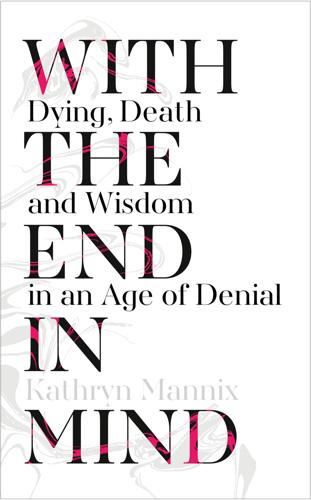
With the End in Mind
by
Kathryn Mannix
Published 29 Dec 2017
Some people want music, and some prefer quiet. We want to help you to make this time the best that we can, so please let us know what we can do to help.’ Pause. This is a lot to take in, and often needs to be repeated. The nurse opens another vial to add to the IV line, and I see that Gerry’s blood pressure is almost unrecordable. He is failing fast. A bed is wheeled bumpily into the room by two nurses, who skilfully transfer him into it, complete with his tangle of tubes and drip lines. They invite the family to accompany them, and wheel Gerry away to a quiet room. Kathleen shepherds the sons, and Lisl takes the wife’s hand as they follow.
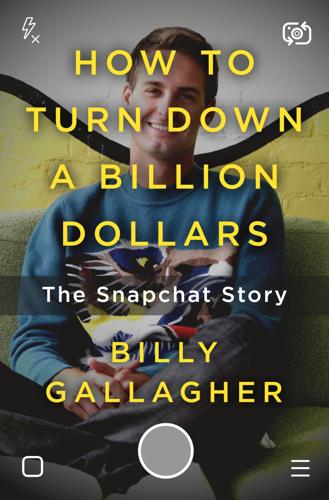
How to Turn Down a Billion Dollars: The Snapchat Story
by
Billy Gallagher
Published 13 Feb 2018
Facebook tried to copy Snapchat a million times. But the failures didn’t matter—only the success would. CHAPTER THIRTY-TWO SNAP INC. VENICE, CA When Snapchat released its S-1, an SEC filing that companies looking to go public must make, in early 2017, it shed light on Snapchat’s strategy of placing many bets and failing fast: Our strategy is to invest in product innovation and take risks to improve our camera platform. We do this in an effort to drive user engagement, which we can then monetize through advertising. We use the revenue we generate to fund future product innovation to grow our business. In a world where anyone can distribute products instantly and provide them for free, the best way to compete is by innovating to create the most engaging products.
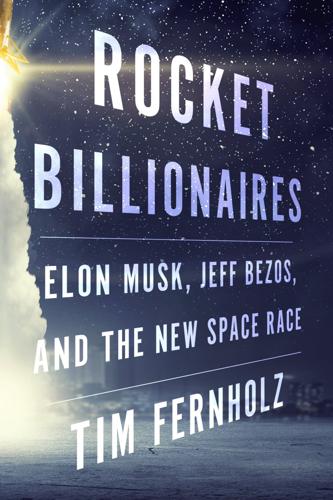
Rocket Billionaires: Elon Musk, Jeff Bezos, and the New Space Race
by
Tim Fernholz
Published 20 Mar 2018
Software engineers rejected the so-called waterfall style of project management common in more industrial settings, where product requirements are outlined, developed, tested, and implemented in rigid succession. Instead, under rubrics like “agile” engineering, developers would gradually build out the software, testing it as they went and updating requirements in the face of challenges. This is the origin of the “fail fast” ethos associated with risk-taking digital entrepreneurs: once you figure out what doesn’t work, it’s easier to figure out what does. These approaches, however, don’t always lend themselves easily to physical manufacturing, where the cost of materials and machining adds up faster than the hours of software engineers making virtual products.
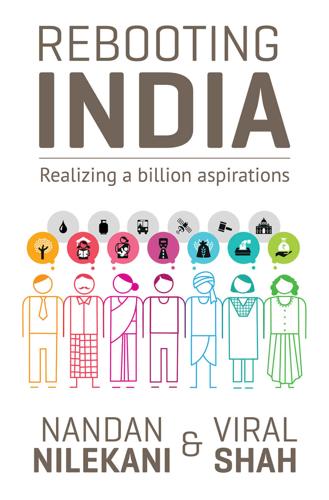
Rebooting India: Realizing a Billion Aspirations
by
Nandan Nilekani
Published 4 Feb 2016
That value and knowledge lie not at the top of a silo, but at the boundaries across varied disciplines. That problem-solving is not about big budgets and a cast of thousands, but small teams with shoestring budgets—teams that include technologists, social activists, people who have built successful businesses, domain experts and bureaucrats. That we have to try often and fail fast without getting bogged down by the armchair experts and critics ready to pounce on the first sign of failure. That it is easier to find fraud by analysing data rather than harassing citizens. That corruption can be eliminated not by having more laws, more inspectors and more ombudsmen, but by reimagining the processes that allow corruption to flourish in the first place.
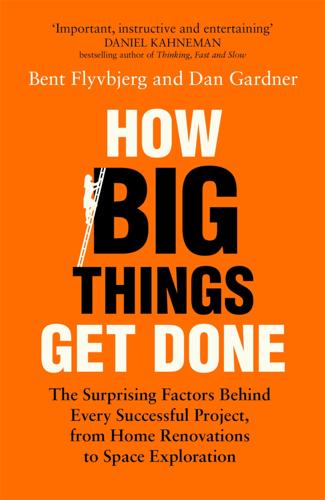
How Big Things Get Done: The Surprising Factors Behind Every Successful Project, From Home Renovations to Space Exploration
by
Bent Flyvbjerg
and
Dan Gardner
Published 16 Feb 2023
There’s an evolutionary reason for this ubiquity: In survival of the fittest, the “fittest” is often a module that is particularly successful in reproducing itself.9 The core of modularity is repetition. Put down one Lego block. Snap on another. And another. And another. Repeat, repeat, repeat. Click, click, click. Repetition is the genius of modularity; it enables experimentation. If something works, you keep it in the plan. If it doesn’t, you “fail fast,” to use the famous Silicon Valley term, and adjust the plan. You get smarter. Designs improve. Repetition also generates experience, making your performance better. This is called “positive learning,” as we saw earlier. Repetition rockets you up the learning curve, making each new iteration better, easier, cheaper, and faster.
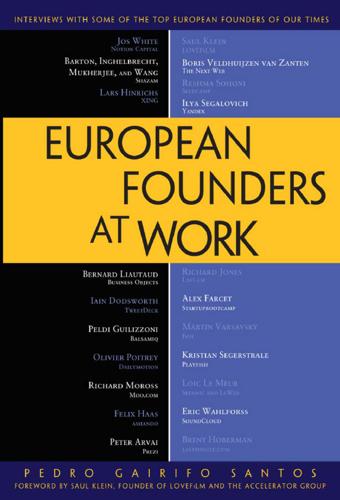
European Founders at Work
by
Pedro Gairifo Santos
Published 7 Nov 2011
So, take something that you think is a need and try to build a prototype as cheap and fast as possible. My favorite quote of all time is Reid Hoffman, founder of LinkedIn, my friend, who says, “If you're not ashamed of your product when you launch it, you launched it too late.” That's really good. So, I think you should launch fast. Fail fast, if it doesn't work. You should focus on execution. I think that we forget too much, including me, about it in Silicon Valley. You should absolutely think about revenue at the very beginning, even if it is a product you are building. I think you need to focus on international and building for international, day one, and not locally, especially if you're in Europe, because it's tempting.
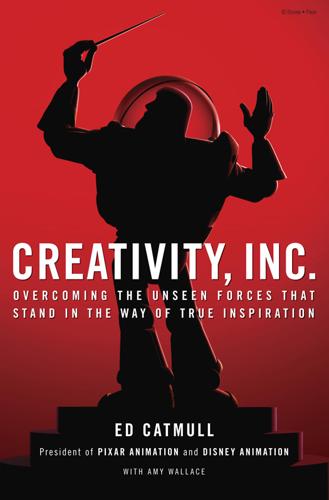
Creativity, Inc.: Overcoming the Unseen Forces That Stand in the Way of True Inspiration
by
Ed Catmull
and
Amy Wallace
Published 23 Jul 2009
To disentangle the good and the bad parts of failure, we have to recognize both the reality of the pain and the benefit of the resulting growth. Left to their own devices, most people don’t want to fail. But Andrew Stanton isn’t most people. As I’ve mentioned, he’s known around Pixar for repeating the phrases “fail early and fail fast” and “be wrong as fast as you can.” He thinks of failure like learning to ride a bike; it isn’t conceivable that you would learn to do this without making mistakes—without toppling over a few times. “Get a bike that’s as low to the ground as you can find, put on elbow and knee pads so you’re not afraid of falling, and go,” he says.
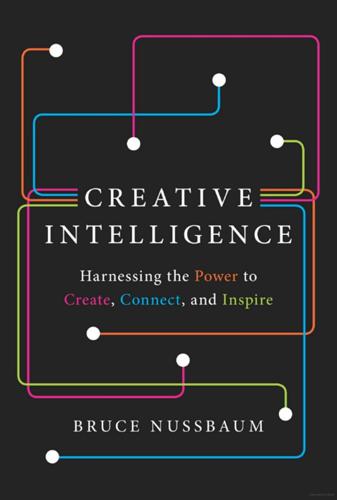
Creative Intelligence: Harnessing the Power to Create, Connect, and Inspire
by
Bruce Nussbaum
Published 5 Mar 2013
And like the artists who came before, today’s innovators take what money can’t buy—the desire to share among those who are lonely, the drive to participate among those who refuse to be passive, the need to build from those who don’t simply want to consume—and transform it into products and experiences that people can buy. And so those of us in the design and innovation world need a new vocabulary and a new repertoire of methodologies. Ideas like “user focus,” “visualizing,” and “failing fast” were all healthy attempts to understand and implement innovation, but we now know their limitations. “User experience,” for example, was a brilliant turn away from the prevailing technology-centric, engineer-driven approach to designing products that drove so many of us crazy—and a turn toward a focus on what users needed.
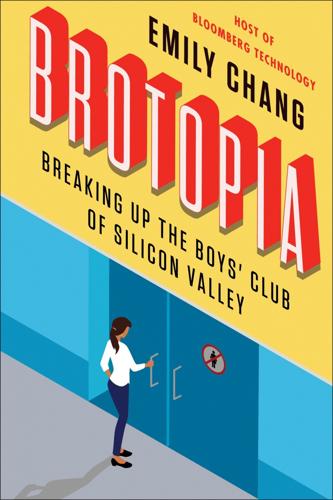
Brotopia: Breaking Up the Boys' Club of Silicon Valley
by
Emily Chang
Published 6 Feb 2018
Having women entirely run our companies would not lead to the best returns, just as having men entirely run them does not either. It’s the workplaces with balance that appear to have the best results. SILICON VALLEY 3.0 Silicon Valley has long celebrated failure, encouraging founders to aim big and fail fast, pick themselves up, and try again. In that spirit, there’s one big failure to add to the list: Silicon Valley has failed women, period, and it’s time for the industry to own it. At the current rate, with VCs celebrated for hiring their first (first!) female partners and companies ever so slowly achieving single-digit increases in the number of female engineers and managers, it will take us a generation or more to get to anywhere near fifty-fifty.

Range: Why Generalists Triumph in a Specialized World
by
David Epstein
Published 1 Mar 2019
He happened to run track under a college coach who tinkered with shoes and who later became his cofounder. “I feel sorry for the people who know exactly what they’re going to do from the time they’re sophomores in high school,” he said. In his memoir, Knight wrote that he “wasn’t much for setting goals,” and that his main goal for his nascent shoe company was to fail fast enough that he could apply what he was learning to his next venture. He made one short-term pivot after another, applying the lessons as he went. Ogas uses the shorthand “standardization covenant” for the cultural notion that it is rational to trade a winding path of self-exploration for a rigid goal with a head start because it ensures stability.
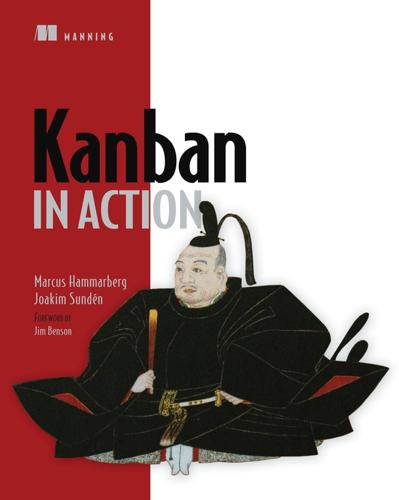
Kanban in Action
by
Marcus Hammarberg
and
Joakim Sunden
Published 17 Mar 2014
Feedback is the creator of knowledge. It tells you about the quality of your work and the quality of your workflow. What works? What should you change? What shouldn’t you change? The more quickly you can get feedback, the more quickly you can change a bad process into a slightly better one. So you want to fail fast if there are any problems. Delayed feedback makes it difficult to connect the effect to its cause, making learning very difficult or even impossible. As you’ve seen, higher WIP causes feedback to become slower and slower. And the slow feedback itself causes even more work to be created, which causes even higher WIP, which prolongs the feedback loop, and ... well, you see where this is heading, don’t you?

The Evolution of Everything: How New Ideas Emerge
by
Matt Ridley
In 2011 the British government hired a digital entrepreneur named Mike Bracken, and asked him to reform the way big IT contracts were managed. With the support of a minister, Francis Maude, he came up with a system that replaced what he called ‘waterfall’ projects, which specified their needs in advance and ended up running over budget and out of time, with something much more Darwinian: projects were told to start small, fail fast, get feedback from users early, and evolve as they went along. When I interviewed Mr Bracken about this approach, which by 2014 had begun to have some striking successes, not least in the gradual but accelerating roll-out of a single government web portal named gov.uk to replace 1,800 separate websites, I realised that what he was describing was evolution, as opposed to creationism.

Human Frontiers: The Future of Big Ideas in an Age of Small Thinking
by
Michael Bhaskar
Published 2 Nov 2021
As disciplines’ frontiers progress, so they move further from others, and as they do they curdle, turn inwards, beginning to self-converse and, lacking the energy of the unexpected and different, move forward only in self-referential increments. That needs resisting. Above all, we shouldn't fear failure. That point is always one of those Silicon Valley rallying cries: fail fast and all that. In general I'm sceptical when people talk about embracing failure. It's usually the richest and most successful who tell the rest of us that failing is just fine – it's classic survivor bias. Meanwhile, back in the real world, failure sucks: we don't have endless chances, it hurts and destroys careers.
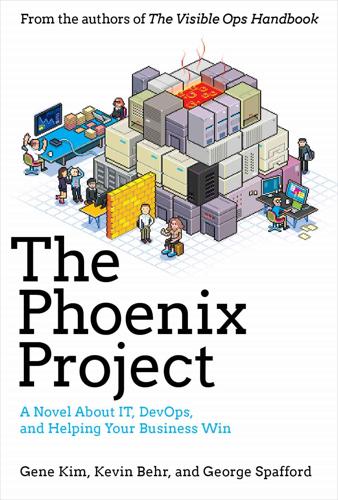
The Phoenix Project: A Novel About IT, DevOps, and Helping Your Business Win
by
Gene Kim
,
Kevin Behr
and
George Spafford
Published 14 Jul 2013
She responds quickly, “These days? Products need to ship in six months. Nine months, tops. Otherwise, some Chinese company will steal our idea, have them on our competitors store shelves, and take the majority of the market. “In these competitive times, the name of the game is quick time to market and to fail fast. We just can’t have multiyear product development timelines, waiting until the end to figure out whether we have a winner or loser on our hands. We need short and quick cycle times to continually integrate feedback from the marketplace. “But that’s just half the picture,” she continues. “The longer the product development cycle, the longer the company capital is locked up and not giving us a return.
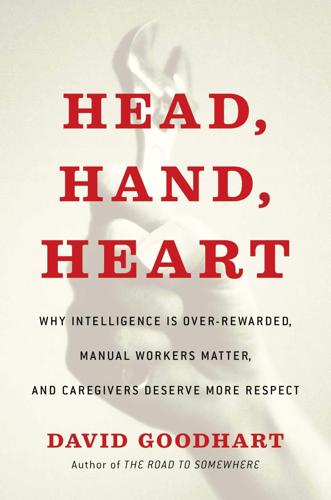
Head, Hand, Heart: Why Intelligence Is Over-Rewarded, Manual Workers Matter, and Caregivers Deserve More Respect
by
David Goodhart
Published 7 Sep 2020
Many of these new firms are well-funded start-ups who have no baggage to preserve and no patience. Many bright young people are choosing not to join the GMN graduate training schemes, preferring instead small organizations where everything is outsourced except the stimulating work of idea origination, design, IP protection, and marketing. They can try many things, fail fast, and follow what works. Digital start-ups can get products to market very quickly, even in something as traditional as razor blades. By comparison, the GMNs look at themselves and see rigid job definitions, turf wars, [and] a command level that got there over time and is out of touch with the latest skills and technology.

Shoe Dog
by
Phil Knight
Published 25 Apr 2016
Starting my own business was the only thing that made life’s other risks—marriage, Vegas, alligator wrestling—seem like sure things. But my hope was that when I failed, if I failed, I’d fail quickly, so I’d have enough time, enough years, to implement all the hard-won lessons. I wasn’t much for setting goals, but this goal kept flashing through my mind every day, until it became my internal chant: Fail fast. In closing I told Johnson that if he could sell 3,250 pairs of Tigers by the end of June 1966—completely impossible, by my calculations—I would authorize him to open that retail outlet he’d been harassing me about. I even put a PS at the bottom, which I knew he’d devour like a candy treat. I reminded him that he was selling so many shoes, so fast, he might want to speak to an accountant.

Innovation and Its Enemies
by
Calestous Juma
Published 20 Mar 2017
It is unlikely that DC will become a serious competitor with AC, but the emerging trends suggest rising interest in diverse power supply systems. The appeal of decentralized DC supply systems will continue to be blunted by the established AC power regimes around the world. 7 Cool Reception Mechanical Refrigeration Test fast, fail fast, adjust fast. TOM PETERS Modern urban life in much of the world would be inconceivable without mechanical refrigeration. In fact, many of the routines associated with urban life are intertwined with the capacity to keep a wide range of products cold. Before the development of mechanical refrigeration, many people relied on natural ice as the main source of cooling for food and drinks.

The Wires of War: Technology and the Global Struggle for Power
by
Jacob Helberg
Published 11 Oct 2021
Eventually, the Toledo Blade trumpeted the multimillion-dollar success the firm had become under the headline “Barber, Dentist, Builder Combine, Prosper In Real Estate Ventures.”3 In the article, my grandfather was called by his preferred nickname—Sam “the Poor Barber” Helberg. * * * Years before I’d hear Silicon Valley slogans like “Fail fast, fail often” or “Move fast and break things,” it was my family of striving underdogs who taught me resilience and hard work. We lived by the motto “Win or lose, always get caught trying.” My father, a psychiatrist able to prescribe himself pills, struggled with addiction but never stopped trying to get clean.
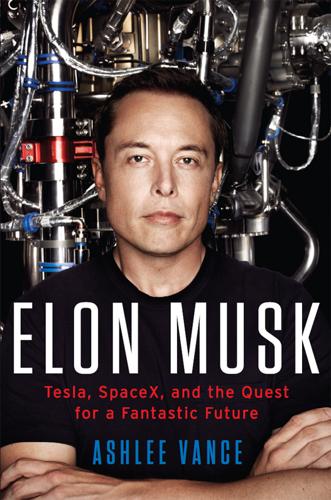
Elon Musk: Tesla, SpaceX, and the Quest for a Fantastic Future
by
Ashlee Vance
Published 18 May 2015
We’d get FedEx boxes, and they couldn’t even decide who should sign for the package.” Throughout these early years, the engineers credited Eberhard with making quick, crisp decisions. Rarely did Tesla get hung up overanalyzing a situation. The company would pick a plan of attack, and when it failed at something, it failed fast and then tried a new approach. It was many of the changes that Musk wanted that started to delay the Roadster. Musk kept pushing for the car to be more comfortable, asking for alterations to the seats and the doors. He made the carbon-fiber body a priority, and he pushed for electronic sensors on the doors so that the Roadster could be unlocked with the touch of a finger instead of a tug on a handle.

Elixir in Action
by
Saša Jurić
Published 30 Jan 2019
It’s certainly not something you should let crash. In contrast, when storing data, you use File.write!/2 (notice the exclamation mark), which may throw an exception and crash the process. If you don’t succeed in saving the data, your database worker has failed, and there’s no point in hiding this fact. Better to fail fast, which will cause an error that will be logged and (hopefully) noticed and fixed. Of course, restarting may or may not help. For example, if a bug in the system allows multiple workers to write to the same file, then restarting will fix this situation—you let one process crash, and after restart, things will work again.
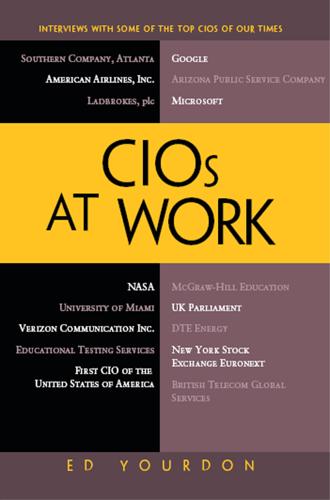
CIOs at Work
by
Ed Yourdon
Published 19 Jul 2011
Because of our geographic spread, often an idea in one geography for regulation purposes cannot be applied in the other, but you have lessons learned that can be applied. So we have innovation or ideas coming out at us in so many different ways, and we also foster innovation and an open culture here to where every idea is a good idea. It’s a simple thing: fail, fail fast, but succeed faster. Yourdon: And get data about it, yes. I agree. One last thing that has always struck me, because I’ve been in the field for 45 years. Forty-five years ago, much of what we dealt with in technology was very expensive and very scarce and therefore controlled very diligently. But now, of course, so much technology has become cheap to the point of almost being free, and pervasive to the point where our employees—not just in the IT department, but employees everywhere, or customers in your case—may well have better technology at home than what they’re going to find in the office.

Army of None: Autonomous Weapons and the Future of War
by
Paul Scharre
Published 23 Apr 2018
To achieve its mission, DARPA has a unique culture and organization distinct from the rest of the military-industrial complex. DARPA only invests in projects that are “DARPA hard,” challenging technology problems that others might deem impossible. Sometimes, these bets don’t pan out. DARPA has a mantra of “fail fast” so that if projects fail, they do so before investing massive resources. Sometimes, however, these investments in game-changing technologies pay huge dividends. Over the past five decades, DARPA has time and again laid the seeds for disruptive technologies that have given the United States decisive advantages.

A Clearing in the Distance: Frederick Law Olmsted and America in the 19th Century
by
Witold Rybczynski
Published 1 Jan 1999
He had taken firm control of his responsibilities, outmaneuvered Viele, and been given a raise—all as he had planned. But now he was overwhelmed by a singular personal tragedy. On November 13, 1857, his brother, John, wrote that his health had taken a considerable turn for the worse. He was in Nice, bedridden, and heavily sedated with opium. He was failing fast. “It appears we are not to see one another any more—I have not many days, the Dr says.” Eleven days later he was dead. He died attended by Mary and his three children, as well as by his father, stepmother, and half sisters, who had hurried from their European tour to his side. He was buried in the Protestant cemetery overlooking the Mediterranean.
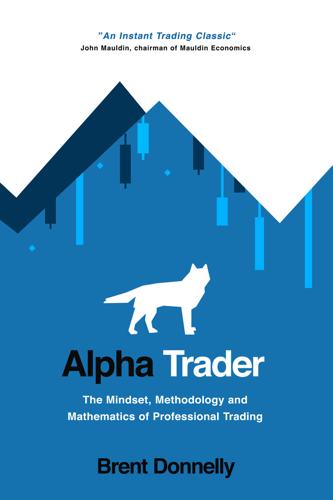
Alpha Trader
by
Brent Donnelly
Published 11 May 2021
You don’t need to take radical action; make continuous small changes. Start small and keep improving every day. Another hot topic in the world of education is grit. Grit, perseverance, mental endurance If you have kids, you have probably been bombarded with articles and parent coffees and TED Talks about building grit in your children. Fail early and fail fast and fail often and the marshmallow test and all that. Here is how Angela Duckworth, who popularized the term “grit”, defines it50: Grit is passion and perseverance for long-term goals. One way to think about grit is to consider what grit isn’t. Grit isn’t talent. Grit isn’t luck. Grit isn’t how intensely, for the moment, you want something.
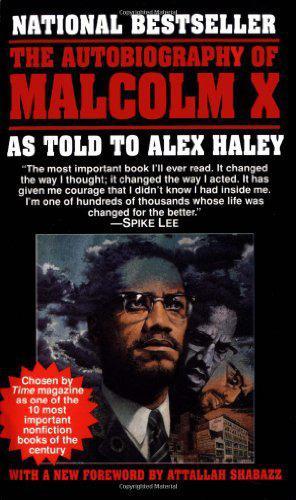
The autobiography of Malcolm X
by
Malcolm X; Alex Haley
Published 15 Aug 1999
Du Bois, a writer, was the Director of Ghanaian television, which was planned for educational purposes. When Dr. Du Bois had come to Ghana, she told me, Dr. Nkrumah had set up the aging great militant Afro-American scholar like a king, giving to Dr. Du Bois everything he could wish for. Mrs. Du Bois told me that when Dr. Du Bois was failing fast, Dr. Nkrumah had visited, and the two men had said good-bye, both knowing that one's death was near-and Dr. Nkrumah had gone away in tears. My final Ghanaian social event was a beautiful party in my honor given by HisExcellency Mr. Armando Entralgo Gonzalez, the Cuban Ambassador to Ghana. The next morning-it was Sunday- the “Malcolm X Committee” was waiting at my hotel, to accompany me to the airport.
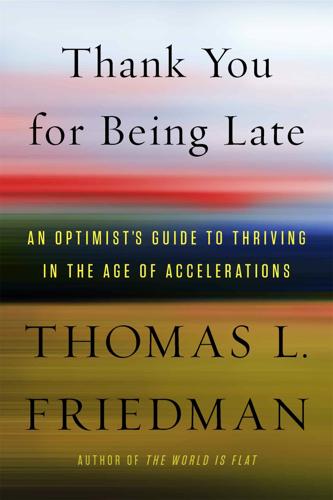
Thank You for Being Late: An Optimist's Guide to Thriving in the Age of Accelerations
by
Thomas L. Friedman
Published 22 Nov 2016
They need to be as innovative as the innovators. They need to operate at the speed of Moore’s law. “Innovation,” Teller said, “is a cycle of experimenting, learning, applying knowledge, and then assessing success or failure. And when the outcome is failure, that’s just a reason to start the cycle over again.” One of X’s mottos is “Fail fast.” Teller tells his teams: “I don’t care how much progress you make this month; my job is to cause your rate of improvement to increase—how do we make the same mistake in half the time for half the money?” In sum, said Teller, what we are experiencing today, with shorter and shorter innovation cycles, and less and less time to learn to adapt, “is the difference between a constant state of destabilization versus occasional destabilization.”
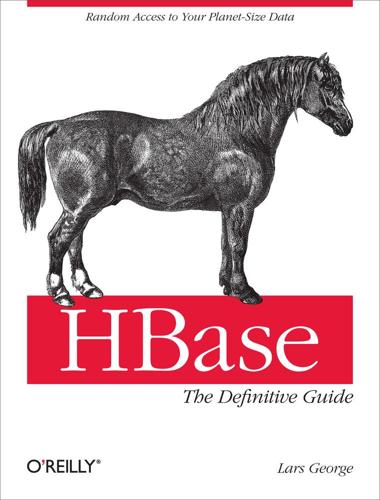
HBase: The Definitive Guide
by
Lars George
Published 29 Aug 2011
For the master nodes, on the other hand, it does make sense to use a RAID disk setup to protect the crucial filesystem data. A common configuration is RAID 1+0, or RAID 0+1. For both servers, though, make sure to use disks with RAID firmware. The difference between these and consumer-grade disks is that the RAID firmware will fail fast if there is a hardware error, and therefore will not freeze the DataNode in disk wait for a long time. Some consideration should be given regarding the type of drives—for example, 2.5” versus 3.5” drives or SATA versus SAS. In general, SATA drives are recommended over SAS since they are more cost-effective, and since the nodes are all redundantly storing replicas of the data across multiple servers, you can safely use the more affordable disks.

Antifragile: Things That Gain From Disorder
by
Nassim Nicholas Taleb
Published 27 Nov 2012
He probably meant “Be crazy but retain the rationality of choosing the upper bound when you see it.” Any trial and error can be seen as the expression of an option, so long as one is capable of identifying a favorable result and exploiting it, as we see next. FIGURE 6. The mechanism of optionlike trial and error (the fail-fast model), a.k.a. convex tinkering. Low-cost mistakes, with known maximum losses, and large potential payoff (unbounded). A central feature of positive Black Swans: the gains are unbounded (unlike a lottery ticket), or, rather, with an unknown limit; but the losses from errors are limited and known.

Galileo's Dream
by
Kim Stanley Robinson
Published 29 Dec 2009
Trailing at a discreet distance as we had been, we could only shriek and race over the bridge and kneel by the old man, applying pressure to the cuts as we found them in the flickering torchlight. The stiletto left in his right temple had apparently bent on his upper jawbone and then reemerged from his right cheek. That wound by itself looked fatal. But for the moment he was still alive, his breath rapid and shallow, failing fast. Women were screaming from the windows overlooking the bridge, shouting directions for the pursuit of the cutthroats. Very soon we would be joined by others; already people were on the bridge calling out. But it was very dark despite the torches, so we shot him up with antibiotics and glued shut a slashed vein in the groin that was sure to kill him.

Site Reliability Engineering: How Google Runs Production Systems
by
Betsy Beyer
,
Chris Jones
,
Jennifer Petoff
and
Niall Richard Murphy
Published 15 Apr 2016
This problem can be avoided if the requests that don’t complete return with an error early, rather than waiting the full deadline. For example, if a backend is unavailable, it’s usually best to immediately return an error for that backend, rather than consuming resources until it the backend available. If your RPC layer supports a fail-fast option, use it. Having deadlines several orders of magnitude longer than the mean request latency is usually bad. In the preceding example, a small number of requests initially hit the deadline, but the deadline was three orders of magnitude larger than the normal mean latency, leading to thread exhaustion.

This Is Service Design Doing: Applying Service Design Thinking in the Real World: A Practitioners' Handbook
by
Marc Stickdorn
,
Markus Edgar Hormess
,
Adam Lawrence
and
Jakob Schneider
Published 12 Jan 2018
“Fast iterations in prototyping minimum viable solutions are a key asset for gathering user insights, for reducing the time to product, and for accelerating the innovation process.” — Dr. Markus Durstewitz By having tangible prototypes and the possibility to interact with and alter them, we were able to gain deep insights, tapping into the tacit knowledge of the different stakeholders. We used the prototypes to test early and fail fast and cheap, in order to iterate to a solution that would ultimately be valuable to the end users and approved by all stakeholders. The simple prototypes helped us to perform early user tests and to reach a good level of maturity and alignment before making bigger investments. From need finding to prototyping: Finding opportunities beyond the obvious and prototyping in design thinking We started out with user research to understand how the production environment is perceived from a worker’s point of view.

Elon Musk
by
Walter Isaacson
Published 11 Sep 2023
But it turned out not to be ready by the time of the launch, and Musk had calculated, based on data from static-fire tests, that the high-density concrete would survive. Like the decision to forgo slosh baffles on the early version of the Falcon 1, taking these risks turned out to be a mistake. It’s unlikely that NASA or Boeing, with their stay-safe approach, would have made those decisions. But Musk believed in a fail-fast approach to building rockets. Take risks. Learn by blowing things up. Revise. Repeat. “We don’t want to design to eliminate every risk,” he said. “Otherwise, we will never get anywhere.” He had declared beforehand that he would consider the experimental launch a success if the rocket cleared the pad, rose high enough to blow up out of sight, and provided a lot of useful new information and data.

Haskell Programming: From First Principles
by
Christopher Allen
and
Julie Moronuki
Published 1 Jan 2015
MONAD 718 mkSphericalCow'' "Bess" 5 499 = noEmpty "Bess" >>= \ "Bess" -> noNegative 5 >>= \ agey -> noNegative 499 >>= \ weighty -> weightCheck (Cow "Bess" agey weighty) -- 5 >= 0 is true, so we get Just 5 noNegative 5 | 5 >= 0 = Just 5 | otherwise = Nothing Again, although noNegative returns Just pass 5 on: 5, the bind function will mkSphericalCow'' "Bess" 5 499 = noEmpty "Bess" >>= \ "Bess" -> noNegative 5 >>= \ 5 -> noNegative 499 >>= \ weighty -> weightCheck (Cow "Bess" 5 weighty) -- 499 >= 0 is true, so we get Just 499 noNegative 499 | 499 >= 0 = Just 499 | otherwise = Nothing Passing 499 on: mkSphericalCow'' "Bess" 5 499 = noEmpty "Bess" >>= \ "Bess" -> noNegative 5 >>= \ 5 -> noNegative 499 >>= \ 499 -> weightCheck (Cow "Bess" 5 499) CHAPTER 18. MONAD 719 weightCheck (Cow "Bess" 5 499) = let 499 = weight (Cow "Bess" 5 499) "Bess" = name (Cow "Bess" 5 499) -- fyi, 499 > 499 is False. in if "Bess" == "Bess" && 499 > 499 then Nothing else Just (Cow "Bess" 5 499) So in the end, we return Just (Cow "Bess" 5 499). Fail fast, like an overfunded startup But what if we had failed? We’ll dissect the following computation: Prelude> mkSphericalCow'' "" 5 499 Nothing And how do the guts fall when we explode this poor bovine? mkSphericalCow'' "" 5 499 = noEmpty "" >>= \ nammy -> noNegative 5 >>= \ agey -> noNegative 499 >>= \ weighty -> weightCheck (Cow nammy agey weighty) -- "" == "", so we get the Nothing case noEmpty "" = Nothing -- noEmpty str = Just str After we’ve evaluated noEmpty "" and gotten a Nothing value, we use (>>=).

Digital Empires: The Global Battle to Regulate Technology
by
Anu Bradford
Published 25 Sep 2023
Cultural factors also play a role. Business failure carries a greater stigma in Europe, hampering risk-taking and consequently holding back innovation. In Europe, failure is viewed as a “personal tragedy,” whereas in Silicon Valley failure is seen as a badge of honor or rite of passage, leading to the mantra of “fail fast, fail often.”46 Instead of celebrating—or even merely accepting—failure, Europeans value stability, which cultivates a mentality that is antithetical to disruptive innovation.47 Finally, the innovation deficit in Europe can be partly attributed to the EU’s inability to attract the world’s best innovative talent through a proactive migration policy.